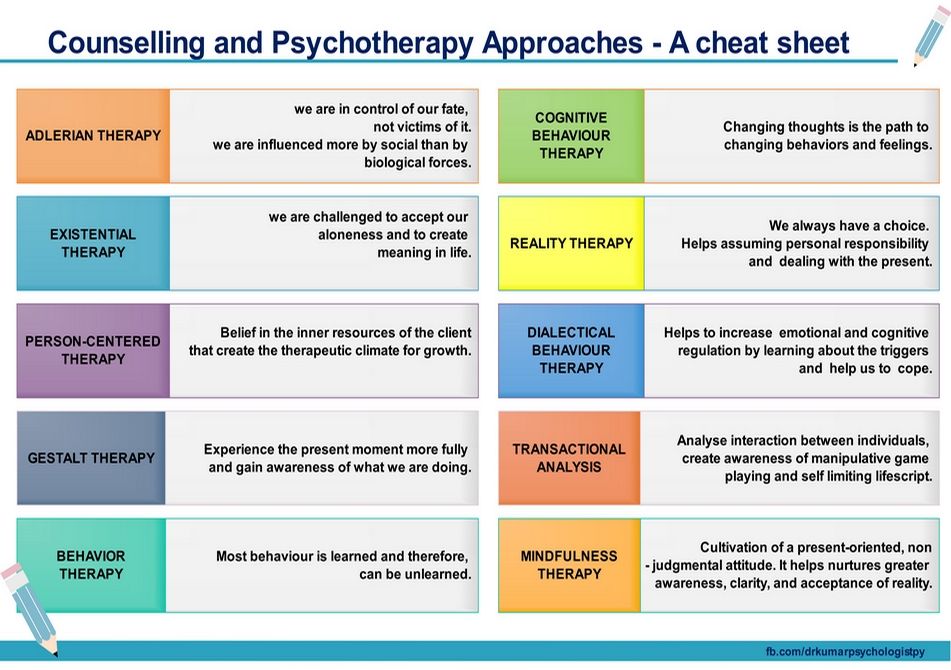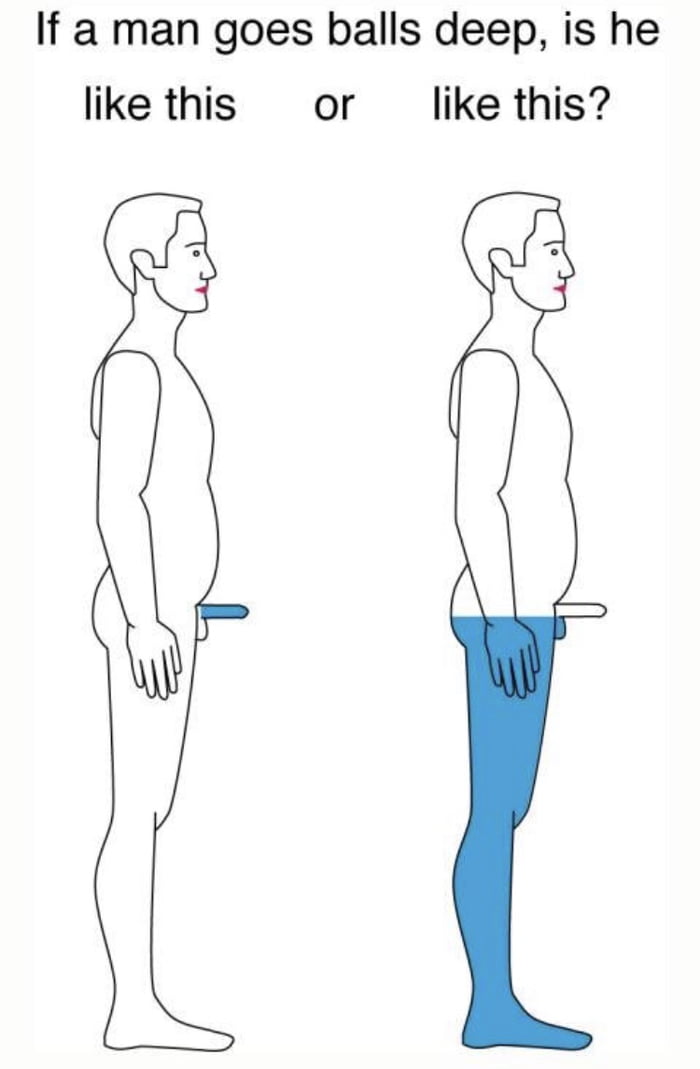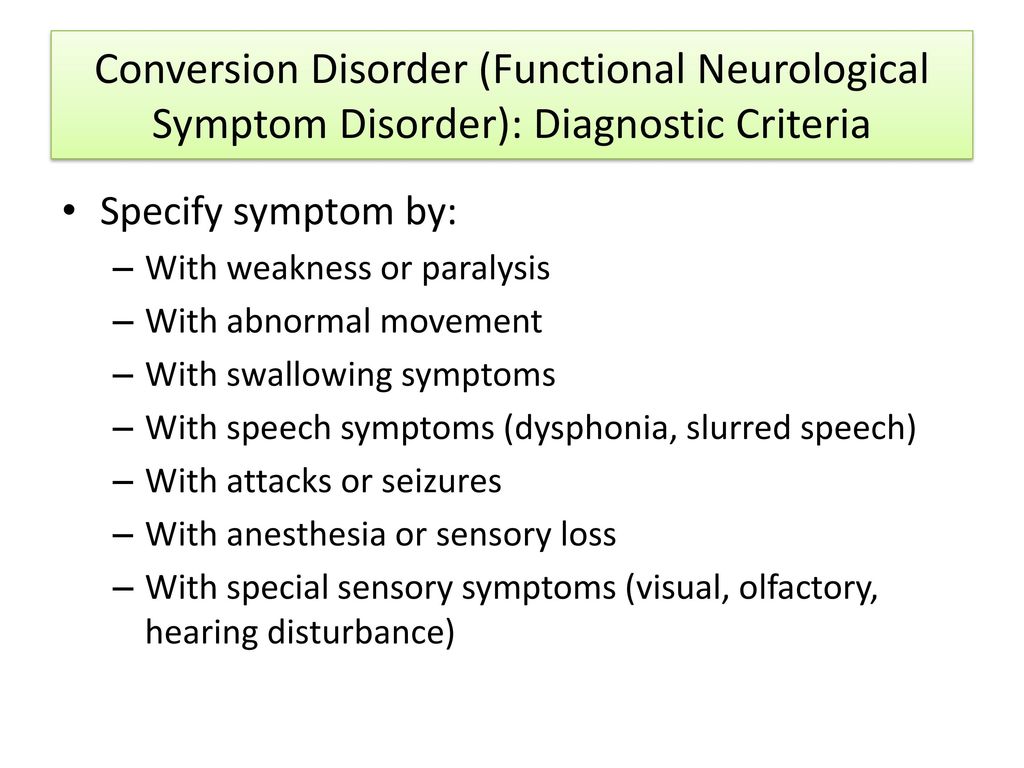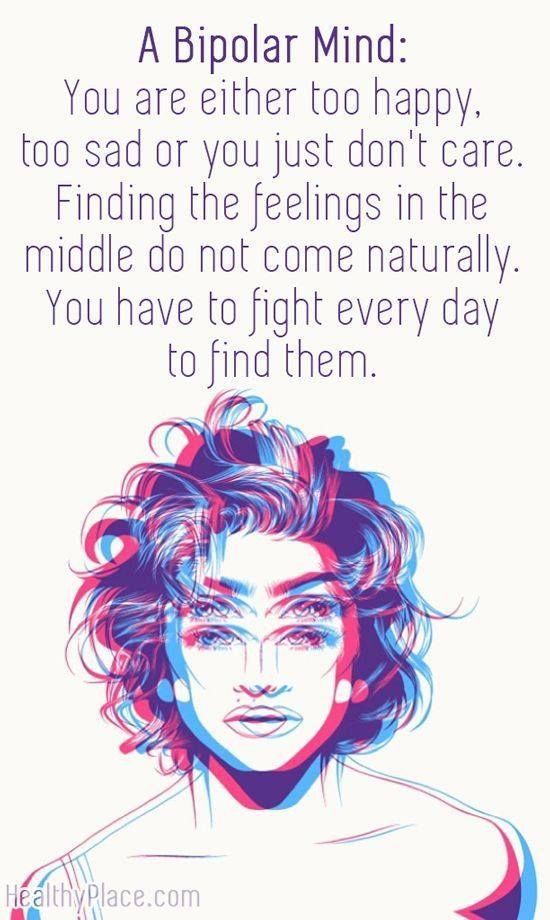Acceptance based behavioral therapy
What Are Acceptance-based Behavior Therapies (ABBTs)?
- Acceptance and Commitment Therapy (ACT)
- Mindfulness-based Cognitive Therapy (MBCT)
- Integrative Behavioral Couple Therapy (IBCT)
- Dialectical Behavior Therapy (DBT)
These are all examples of effective treatments for anxiety disorders that come under the umbrella term of Acceptance-Based Behavior Therapy (ABBT).
ABBTs are a type of behavior therapy. Like other behavior therapies, ABBTs conceptualize anxiety disorders as developing due to patterns of behavior that may decrease anxiety in the moment, but do not decrease, and may in fact increase, anxiety in the long run.
For example, let's say that Timmy struggles with generalized anxiety disorder (GAD). A "stuck pattern" of behavior that Timmy may display may be judging himself for feeling anxiety, resulting in him trying to control his anxiety and doing all that he can to try and force it to go away when he is feeling anxious. Because forcing it to go away rarely works, Timmy judges himself more and feels more anxious because he can't get the anxiety to go away. While this may work to decrease Timmy's anxiety in the moment, it does not help Timmy deal with his anxiety in the long run. In fact, because Timmy is avoiding his anxiety, it continues to build and increase over time. To stop this cycle, behavior therapies aim to decrease avoidance and to change these problematic "stuck" patterns of behavior in order to decrease or manage anxiety disorders.
What is Unique About ABBTs?
ABBTs are differentiated from other behavior therapies in that they focus on three major goals: increasing awareness, increasing acceptance, and living a meaningful life worth living.
Increasing Awareness
Imagine that you're sitting on the beach, several feet away from the waves breaking on the shore. Several hours later, you realize that you are soaked and that the waves are breaking over you.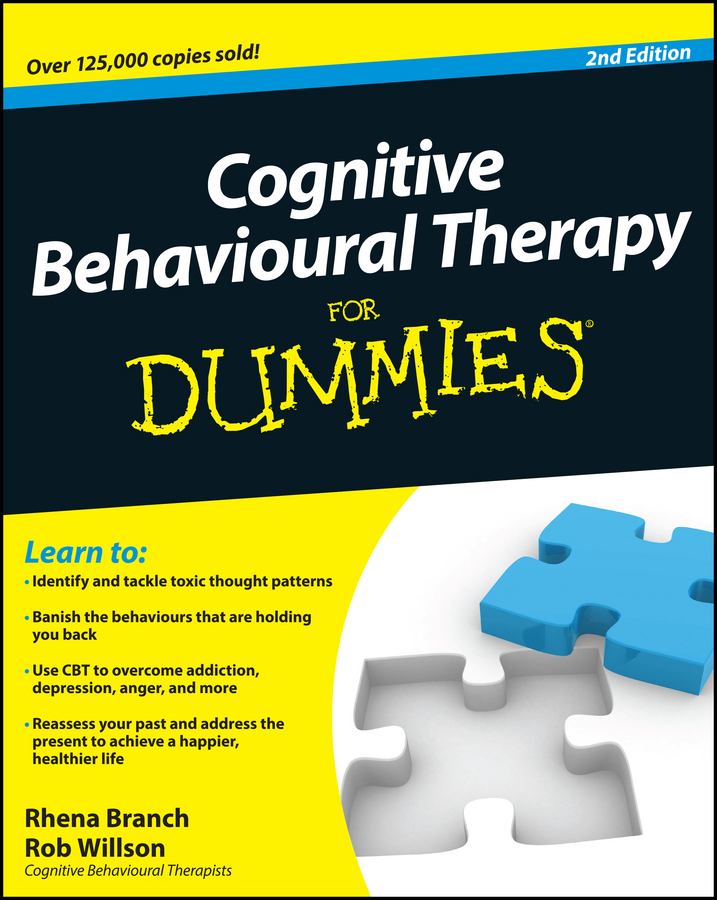 Did the waves come out of nowhere and suddenly jump closer to you? Are you now stuck in the waves forever? Are you now helpless and unable to keep yourself out of the waves? Probably not. In fact, you can probably just move. However, to come to this conclusion, you must be aware of several things: that the water moves in with the tide, that high tide was approaching, that it is specifically the waves of the ocean that is getting you wet, that you can move away from the water without it following you around forever, and that you do not need to leave the beach completely in order to stop the waves from crashing onto you.
Did the waves come out of nowhere and suddenly jump closer to you? Are you now stuck in the waves forever? Are you now helpless and unable to keep yourself out of the waves? Probably not. In fact, you can probably just move. However, to come to this conclusion, you must be aware of several things: that the water moves in with the tide, that high tide was approaching, that it is specifically the waves of the ocean that is getting you wet, that you can move away from the water without it following you around forever, and that you do not need to leave the beach completely in order to stop the waves from crashing onto you.
You can think of anxiety like these waves. Sometimes, when we feel anxious, we may feel as though our anxiety comes out of nowhere, that it will never end, that it consumes us, and that there is nothing we can do about our anxiety. However, when we're able to take a step back from our anxiety, we're able to notice that our anxiety is temporary, that it isn't the case that "everything" is causing anxiety, and that there are things that we can do to manage our anxiety.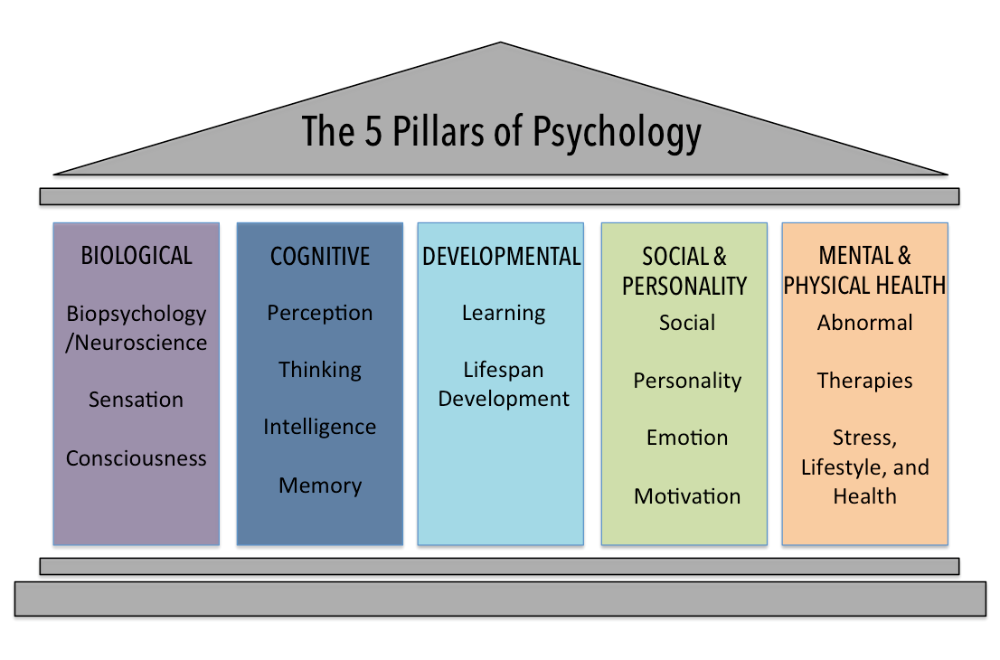 ABBTs work toward this process of taking a step back by increasing an awareness of internal experiences. Here, awareness refers to more than just noticing your anxiety; it refers to noticing your anxiety building, noticing how your anxiety increases and decreases, noticing what increases or decreases that anxiety, and noticing the ways in which you are not your anxiety. By increasing our awareness, we are able to see that our anxiety is temporary, manageable, and not all-encompassing.
ABBTs work toward this process of taking a step back by increasing an awareness of internal experiences. Here, awareness refers to more than just noticing your anxiety; it refers to noticing your anxiety building, noticing how your anxiety increases and decreases, noticing what increases or decreases that anxiety, and noticing the ways in which you are not your anxiety. By increasing our awareness, we are able to see that our anxiety is temporary, manageable, and not all-encompassing.
Increasing Acceptance
ABBTs also work to build an acceptance of one's internal experiences, rather than an effort to avoid, change, or control them. Oftentimes, as anxiety grows, we tend to try and change or control our anxiety, willing it to go down or ignoring its occurrence. Going back to the beach example, let's say that instead of moving, you refuse to accept that the tide is rising. Or maybe you try to change the fact that the tide is rising by mentally willing it to go down.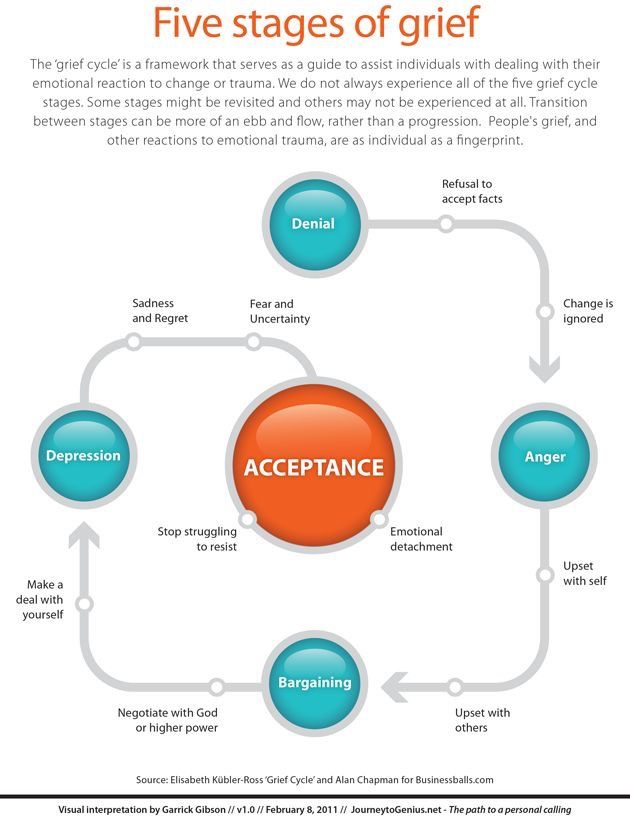 What happens to your things? Have you successfully kept them from getting wet? Probably not. In fact, the longer you refuse to accept that the tide is rising, the more soaked your things get. Again, if we see the tide as our anxiety, we can see that trying to pretend or change something that we cannot change or ignore doesn't solve the problem. In fact, ignoring the anxiety or trying to change it can make it worse.
What happens to your things? Have you successfully kept them from getting wet? Probably not. In fact, the longer you refuse to accept that the tide is rising, the more soaked your things get. Again, if we see the tide as our anxiety, we can see that trying to pretend or change something that we cannot change or ignore doesn't solve the problem. In fact, ignoring the anxiety or trying to change it can make it worse.
Living a Life Worth Living
ABBTs also highlight the importance of living a life that is consistent with what is personally meaningful to individuals by helping individuals identify their values (what is personally meaningful to them) and encouraging them to take valued actions. Many individuals that struggle with anxiety disorders tend to avoid experiences that cause anxiety, leading to a narrowing of their lives. For example, if Sally is struggling with social anxiety disorder (SAD), and consequently avoids social events and gatherings, she may begin to feel more distant from friends and family, leading her to feel even worse.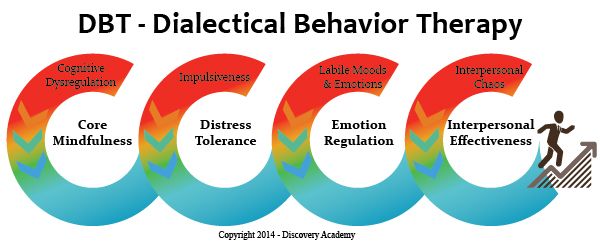 By identifying how individuals want to live their lives and encouraging them to take actions consistent with their values despite their anxiety, ABBTs aim to not get rid of anxiety, but to rather help individuals create and live fulfilling lives despite their anxiety.
By identifying how individuals want to live their lives and encouraging them to take actions consistent with their values despite their anxiety, ABBTs aim to not get rid of anxiety, but to rather help individuals create and live fulfilling lives despite their anxiety.
What do ABBTs Look Like?
Like other behavioral therapies, ABBTs are often tailored to the needs of clients. However, there are two core techniques that most ABBTs use:
Mindfulness
Mindfulness is the process of being aware of the present moment (including thoughts, feelings, and sensations) without judgment, but rather with acceptance and compassion. Mindfulness can take the form of formal mindfulness meditations (ex: observing the breath during breathing exercises, imagining your thoughts as clouds), informal mindfulness practices (ex: noticing the temperature, smell, and texture of soap while washing your hands), or self-monitoring thoughts, feelings, and behaviors (formally or informally), and help to increase the awareness and acceptance of internal and external experiences.
Values Clarification
Values clarification is the process of identifying what is personally meaningful to you in several life domains such as friendships, family, work/education, health, and community. Unlike goals, values are not achievable, but rather act as personal compasses to guide us toward the lives that we want to be living. In therapy, values clarification may take the form of talking with your therapist and writing or journaling about what is personally meaningful to you. The following process of taking valued action may consist of identifying and taking actions that are consistent with your values. For example, if I value challenging myself in my work or education, I may choose to take the valued action of learning and implementing a new therapy technique.
Recommended For You
Anxiety: Therapy And Treatment Options
Yvonne Ogbonmwan, Ph.D. from Emory University0 Likes
Comments
Sources
- Antony, M.
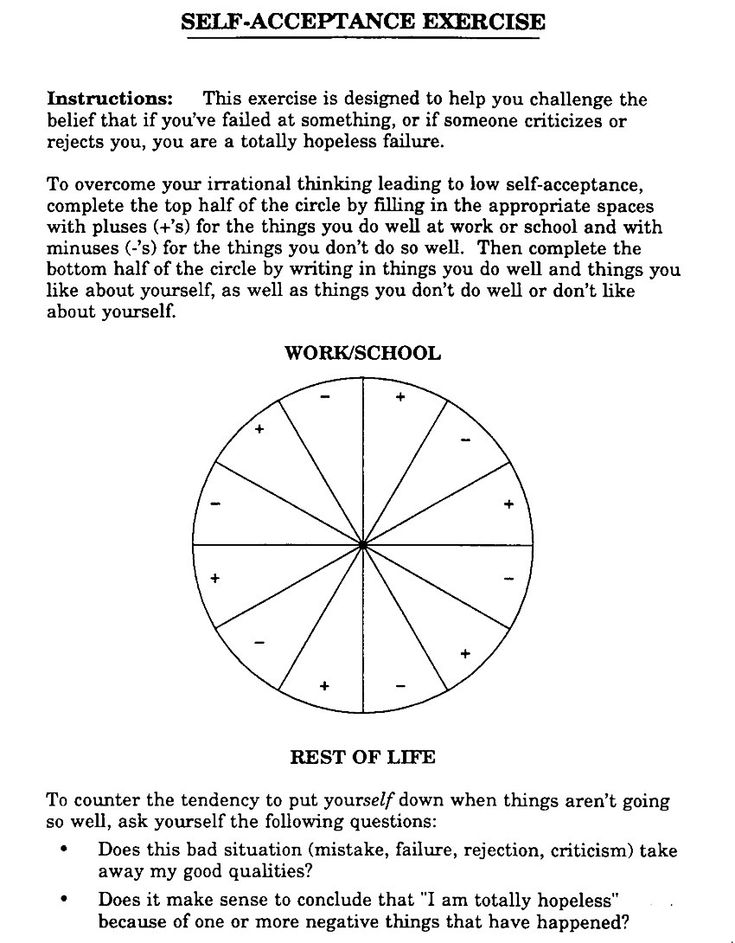 M. & Roemer, L. (2011). Behavior therapy. Washington, DC: American Psychological Association.
M. & Roemer, L. (2011). Behavior therapy. Washington, DC: American Psychological Association. - Christensen, A., & Jacobson, N. S. (1998). Acceptance and change in couple therapy: A therapist's guide to transforming relationships. New York, NY: Norton Professional Books.
- Hayes, S. C., Follette, V. M., & Linehan, M. M. (Eds.). (2004). Mindfulness and acceptance: Expanding the cognitive-behavioral tradition. New York: Guilford Press.
- Hayes, S.C., Strosahl, K.D., Wilson, K.G. (1999). Acceptance and commitment therapy: An experiential approach to behavior change. New York, NY: Guilford Press.
- Hayes, S. C., Strosahl, K. D., Wilson, K. G. (2011). Acceptance and commitment therapy, second edition: The process and practice of mindful change. New York, NY: The Guilford Press.
- Linehan, M. M. (1993). Cognitive Behavioral Treatment of Borderline Personality Disorder. New York: Guilford Press.
- Linehan, M.
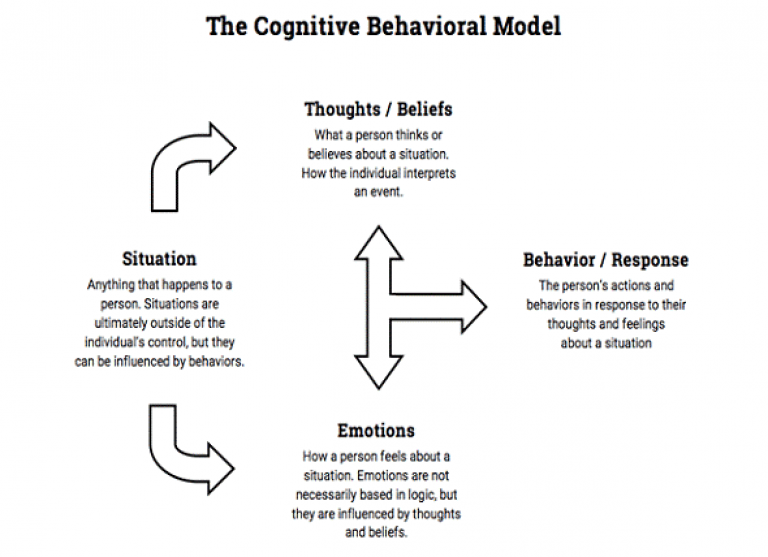 M., Comtois, K., Murray, A.M., et al. (2006). Two-Year Randomized Controlled Trial and Follow-up of Dialectical Behavior Therapy vs Therapy by Experts for Suicidal Behaviors and Borderline Personality Disorder. Archives of General Psychiatry, 63(7), 757-766.
M., Comtois, K., Murray, A.M., et al. (2006). Two-Year Randomized Controlled Trial and Follow-up of Dialectical Behavior Therapy vs Therapy by Experts for Suicidal Behaviors and Borderline Personality Disorder. Archives of General Psychiatry, 63(7), 757-766. - Linehan, M.M. (2014). DBT Skills Training Manual Second Edition, New York: Guilford Press
- Roemer, L., & Orsillo, S. M. (2007). An open trial of an acceptance-based behavior therapy for generalized anxiety disorder. Behavior Therapy, 38(1), 72-85. doi:10.1016/j.beth.2006.04.004
- Roemer, L. & Orsillo, S. M. (2009). Mindfulness- and acceptance-based behavioral therapies in practice. New York, NY: Guilford Press.
- Segal, Z. V., Williams, M. G., Teasdale, J. D. (2002). Mindfulness-based cognitive therapy for depression: A new approach to preventing relapse. New York, NY: Guilford Press.
Date of original publication: February 02, 2017
Acceptance and Commitment Therapy | Psychology Today
Reviewed by Psychology Today Staff
Acceptance and commitment therapy (ACT) is an action-oriented approach to psychotherapy that stems from traditional behavior therapy and cognitive behavioral therapy.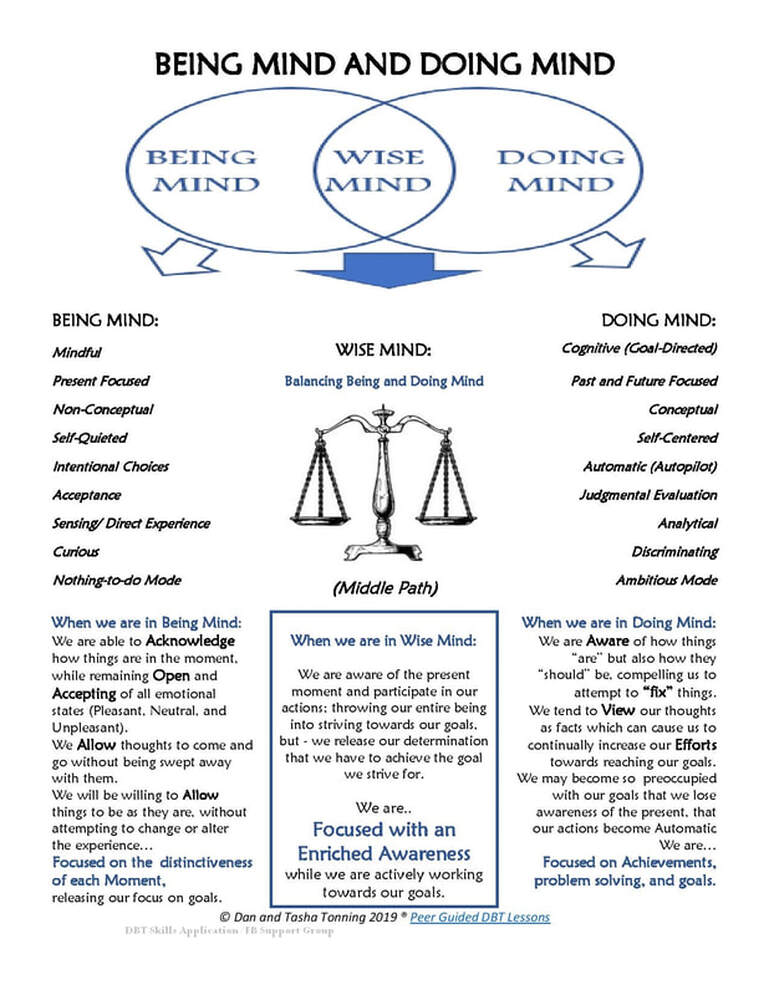 Clients learn to stop avoiding, denying, and struggling with their inner emotions and, instead, accept that these deeper feelings are appropriate responses to certain situations that should not prevent them from moving forward in their lives. With this understanding, clients begin to accept their hardships and commit to making necessary changes in their behavior, regardless of what is going on in their lives and how they feel about it.
Clients learn to stop avoiding, denying, and struggling with their inner emotions and, instead, accept that these deeper feelings are appropriate responses to certain situations that should not prevent them from moving forward in their lives. With this understanding, clients begin to accept their hardships and commit to making necessary changes in their behavior, regardless of what is going on in their lives and how they feel about it.
ACT was developed in the 1980s by psychologist Steven C. Hayes, a professor at the University of Nevada. The ideas that coalesced into ACT emerged from Hayes’s own experience, particularly his history of panic attacks. Eventually, he vowed that he would no longer run from himself—he would accept himself and his experiences.
"We as a culture seem to be dedicated to the idea that ‘negative’ human emotions need to be fixed, managed, or changed—not experienced as part of a whole life. We are treating our own lives as problems to be solved as if we can sort through our experiences for the ones we like and throw out the rest," Hayes writes in a Psychology Today post.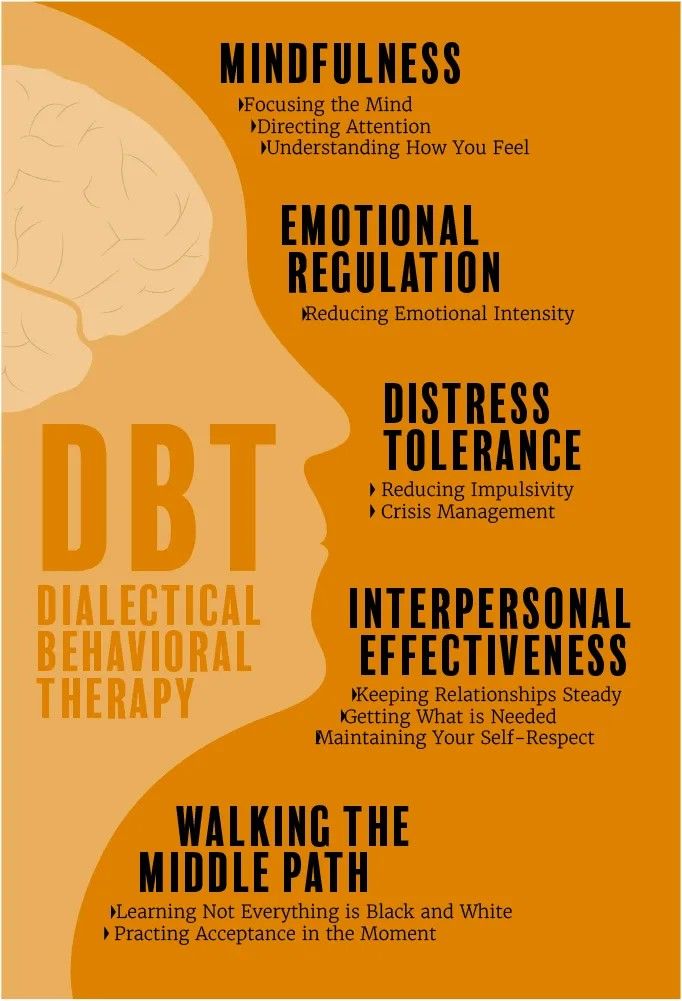 "Acceptance, mindfulness, and values are key psychological tools needed for that transformative shift."
"Acceptance, mindfulness, and values are key psychological tools needed for that transformative shift."
Contents
- When It's Used
- What to Expect
- How It Works
- What to Look for in a Therapist
When It's Used
What to Expect
Working with a therapist, you will learn to listen to your own self-talk or the way you talk to yourself specifically about traumatic events, problematic relationships, physical limitations, or other challenges. You can then decide if a problem requires immediate action and change or if it can, or must, be accepted for what it is while you learn to make behavioral changes that can modify the situation. You may look at what hasn’t worked for you in the past, and the therapist can help you stop repeating thought patterns and behaviors that can cause you more problems in the long run. Once you have faced and accepted your current challenges, you can make a commitment to stop fighting your past and your emotions and, instead, start practicing more confident and optimistic behavior, based on your personal values and goals.
You may look at what hasn’t worked for you in the past, and the therapist can help you stop repeating thought patterns and behaviors that can cause you more problems in the long run. Once you have faced and accepted your current challenges, you can make a commitment to stop fighting your past and your emotions and, instead, start practicing more confident and optimistic behavior, based on your personal values and goals.
ACT aims to develop and expand psychological flexibility. Psychological flexibility encompasses emotional openness and the ability to adapt your thoughts and behaviors to better align with your values and goals.
The six core processes that promote psychological flexibility are:
1. Acceptance
Acceptance involves acknowledging and embracing the full range of your thoughts and emotions rather than trying to avoid, deny, or alter them.
2. Cognitive Defusion
Cognitive defusion involves distancing yourself from and changing the way you react to distressing thoughts and feelings, which will mitigate their harmful effects.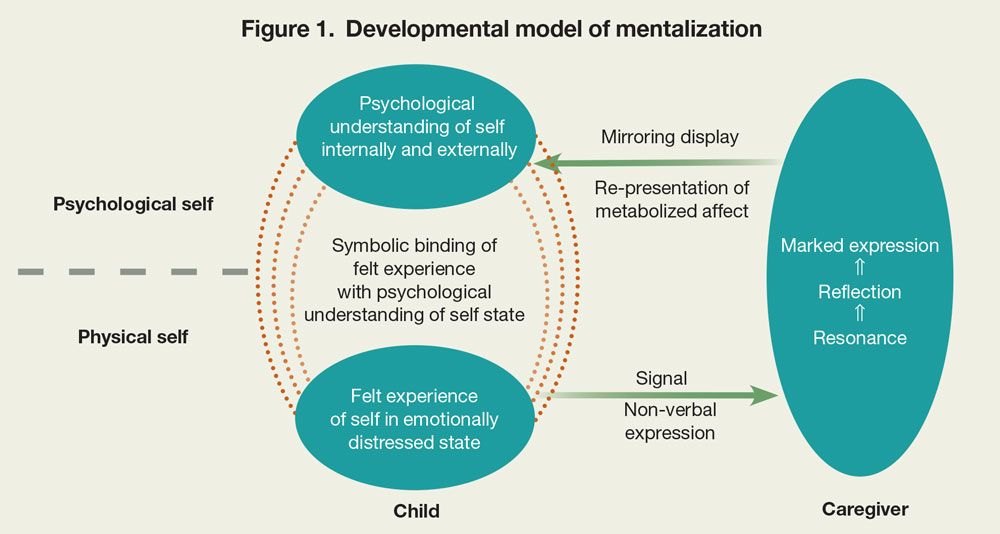 Techniques for cognitive defusion include observing a thought without judgment, singing the thought, and labeling the automatic response that you have.
Techniques for cognitive defusion include observing a thought without judgment, singing the thought, and labeling the automatic response that you have.
3. Being Present
Being present involves being mindful in the present moment and observing your thoughts and feelings without judging them or trying to change them; experiencing events clearly and directly can help promote behavior change.
4. Self as Context
Self as context is an idea that expands the notion of self and identity; it purports that people are more than their thoughts, feelings, and experiences.
5. Values
Values encompass choosing personal values in different domains and striving to live according to those principles. This stands in contrast to actions driven by the desire to avoid distress or adhere to other people’s expectations, for example.
6. Committed Action
Committed action involves taking concrete steps to incorporate changes that will align with your values and lead to positive change.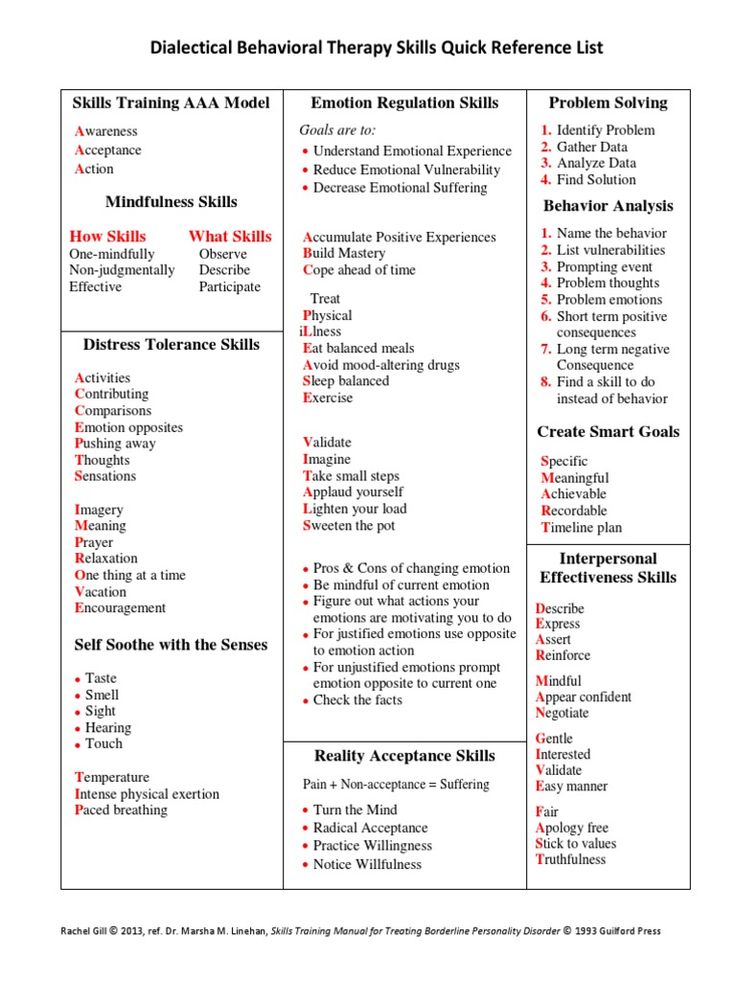 This may involve goal setting, exposure to difficult thoughts or experiences, and skill development.
This may involve goal setting, exposure to difficult thoughts or experiences, and skill development.
How It Works
The theory behind ACT is that it is counterproductive to try to control painful emotions or psychological experiences; suppression of these feelings ultimately leads to more distress. ACT adopts the view that there are valid alternatives to trying to change the way you think, and these include mindful behavior, attention to personal values, and commitment to action. By taking steps to change their behavior while, at the same time, learning to accept their psychological experiences, clients can eventually change their attitudes and emotional states.
What to Look for in an Acceptance and Commitment Therapist
Look for a licensed, experienced therapist, social worker, professional counselor or other mental health professional with additional training in ACT. There is no special certification for ACT practitioners.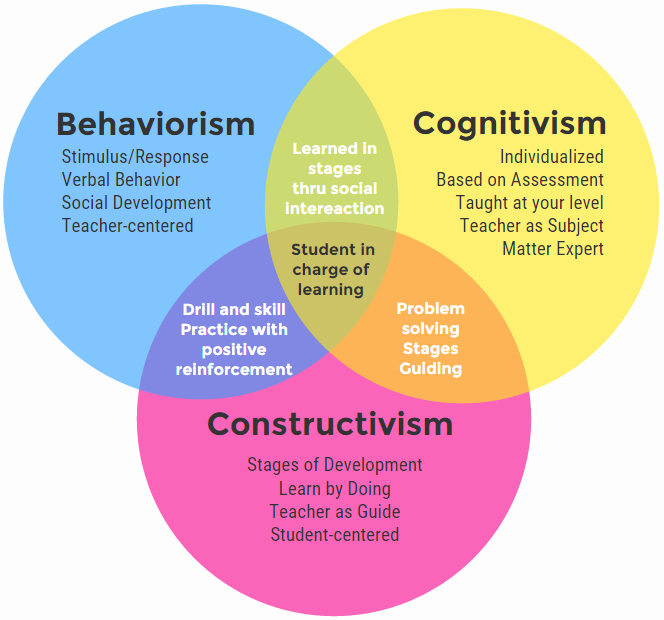 Skills are acquired through peer counseling, workshops, and other training programs. In addition to these credentials, it is important to find a therapist with whom you feel comfortable.
Skills are acquired through peer counseling, workshops, and other training programs. In addition to these credentials, it is important to find a therapist with whom you feel comfortable.
References
Forman EM, Herbert JD, Moitra E, Yeomans PD, Geller PA. A randomized controlled effectiveness trial of acceptance and commitment therapy and cognitive therapy for anxiety and depression. Behavior Modification. November 2007;31(6):772-799
Hayes, S. About ACT. Association for Contextual Behavioral Science. Accessed Feb 6 2017.
Dewane, C. The ABCs of ACT. Social Work Today. Sept/Oct 2008;8(5):34.
Long, D. ACT Certification. Assoc for Contextual Behavioral Science. Accessed feb 6, 2017.
Last updated: 03/21/2022
Acceptance and Responsibility Cognitive Behavioral Therapy (ACT): Third Wave Psychotherapy
FIND A PSYCHOLOGIST
Cognitive Behavioral Therapy (CBT) is a direction that helps the client to get rid of irrational attitudes and develop more successful behavior patterns.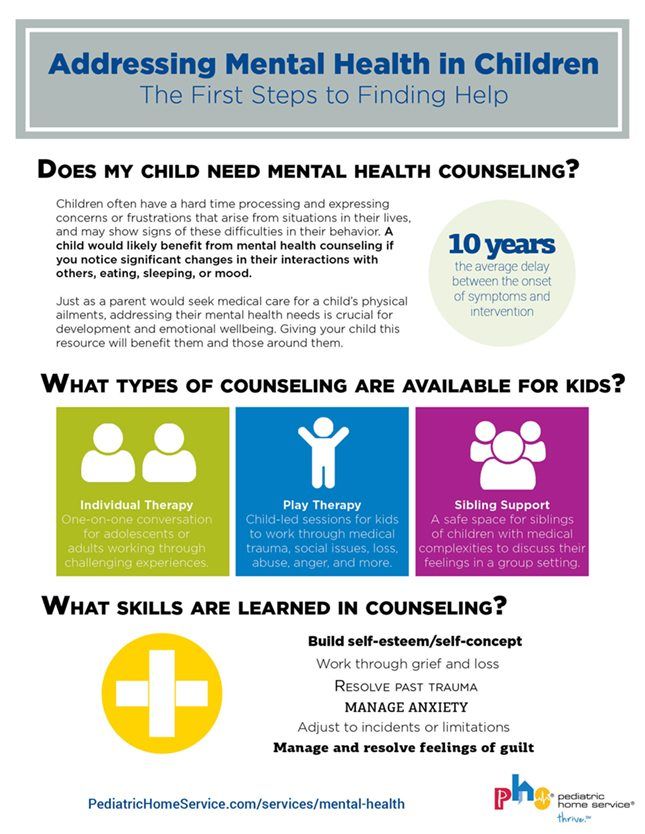 Over time, CBT has evolved into a separate movement called Third Wave Cognitive Behavioral Therapy.
Over time, CBT has evolved into a separate movement called Third Wave Cognitive Behavioral Therapy.
alter
DESTINATION GUIDE
Contents
1. First, second and third wave - what is the difference
2. Third wave CBT basic principles
3. Acceptance and responsibility therapy: “truth is what works”
4. Dialectical Behavior Therapy: "a life worth living"
5. Mindfulness-based cognitive therapy
6. Schema Therapy
7. Case study
8. What to read? nine0005
The first, second and third wave - what is the difference
The first wave was directly behaviorism - a branch of psychology that dealt with human behavior. The second wave is CBT, which combined behavioral theory and cognitivism. In the third wave, CBT-based approaches began to emerge that focused more on awareness and acceptance.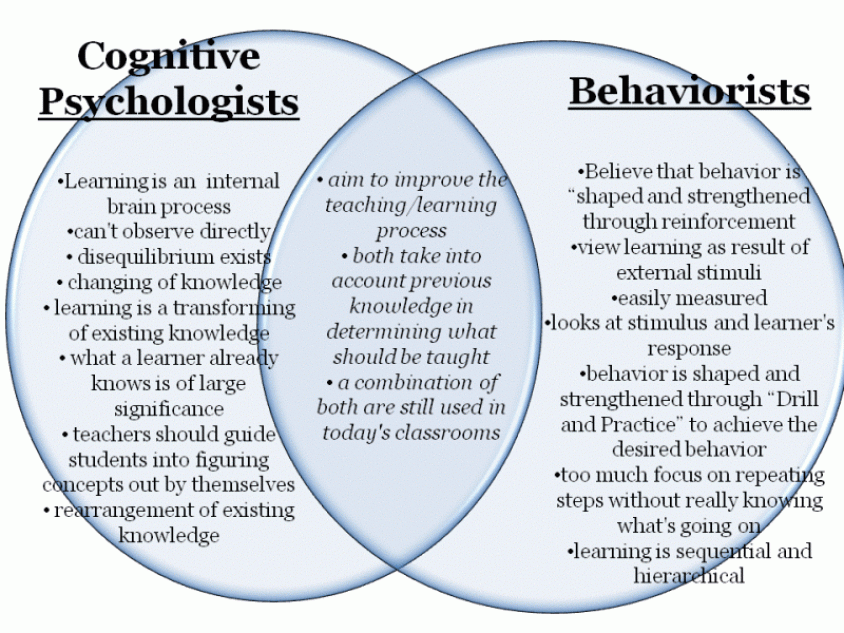 Third wave CBT includes techniques borrowed from other areas of psychotherapy, as well as some practices of Eastern philosophy, such as meditation. nine0003
Third wave CBT includes techniques borrowed from other areas of psychotherapy, as well as some practices of Eastern philosophy, such as meditation. nine0003
Where classical CBT focuses more on problems and negative patterns that need to be changed, Third Wave CBT helps the client to accept himself and his characteristics. This does not mean that there are no changes in therapy. The therapist helps the client to better understand himself and "work with what is."
Fundamentals of Third Wave CBT
Unlike traditional CBT, Third Wave CBT looks beyond the client's behavior and what happens to them. It focuses on the context and the person's inner attitude to what is happening. nine0054 Principles and tools that third wave CBT is based on:
Mindfulness
Mindfulness in third wave CBT is understood as focusing on the here and now moment. In a state of awareness, we notice everything that happens to us. We do not evaluate or try to control our own feelings and reactions.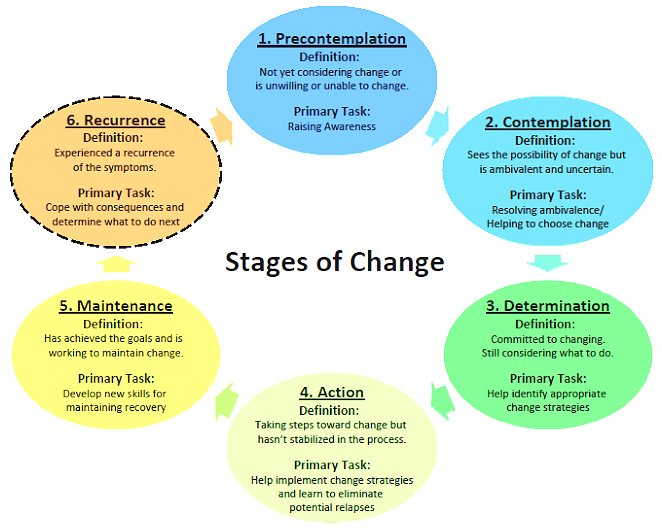 You can learn how to enter this state with the help of meditation practices.
You can learn how to enter this state with the help of meditation practices.
Acceptance
Acceptance of things you cannot control is what third wave CBT teaches. Negative thoughts, feelings and experiences are normal and should not be avoided or forced out of consciousness. nine0005
Personal values
What is important to you personally in life? On the basis of what would you like to build your behavior and make choices? What do you value in other people? All of these are personal values. Knowing, understanding and accepting them is very important. A person who does not rely on them runs the risk of living an "empty" life - even if from the outside it seems good and full.
Psychological flexibility
Psychological flexibility is a kind of combination of all the other concepts of third wave CBT. It is the ability to live in the present moment, accept all your feelings and choose a life filled with personal values.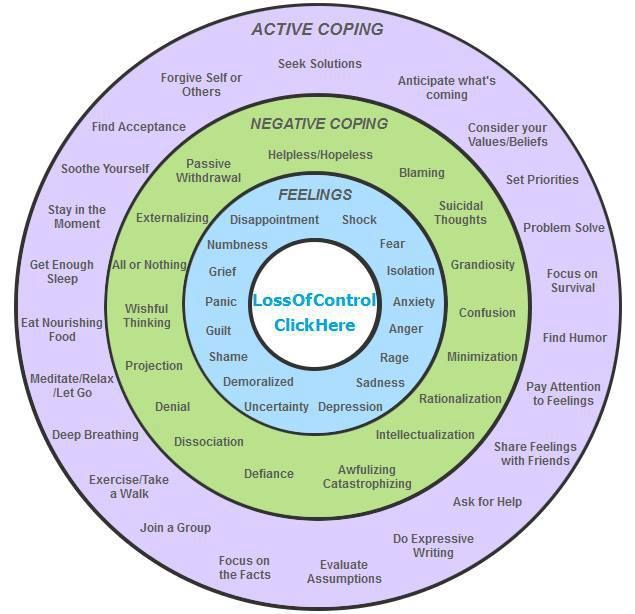 A psychologically flexible person knows how to abandon irrational attitudes from the past in his favor. nine0005
A psychologically flexible person knows how to abandon irrational attitudes from the past in his favor. nine0005
There are several approaches to third wave CBT, and not all of them meet each of these principles. But the general idea - acceptance, values and awareness - is the same for everyone.
Acceptance and commitment therapy: “truth is what works”
Acceptance and commitment therapy (ACT) is an approach built on the principles of awareness and acceptance. It was developed by Stephen Hayes in 1982. Mindfulness helps us live in the moment without getting stuck in the past or worrying about the future. The practice of acceptance aims to stop avoiding negative scenarios and feelings. nine0005
Behavior must serve a purpose. For example, a man wants to meet a girl, but does not do it. What dictated his behavior? He is afraid to face rejection, embarrassment. This is an avoidance strategy. ACT focuses on motivation. Here, mindfulness skills are used to help the client track the purpose of their behavior and understand how it matches their values. The next step is to understand that the fear of rejection and emotional discomfort cannot harm the client. These sensations exist, but the client can act independently of them. nine0005
The next step is to understand that the fear of rejection and emotional discomfort cannot harm the client. These sensations exist, but the client can act independently of them. nine0005
Anton Rusakov, psychologist, works in third wave CBT:
ACT uses 6 basic techniques to work with a client:
Defusion
Suffering, loss, anger, sadness are natural parts of life. From the point of view of ACT, it is not these experiences that harm, but the cognitive "hitch" with them, identification. ACT helps the client understand that he is not his thoughts.
Self-context
This technique teaches the position of the observer. It is similar to "Disconnection" and, in fact, follows from it. In the position of an observer, a person understands that there are no such thoughts that could harm him. nine0005
Acceptance
The technique of acceptance aims to stop controlling everything that happens around and inside.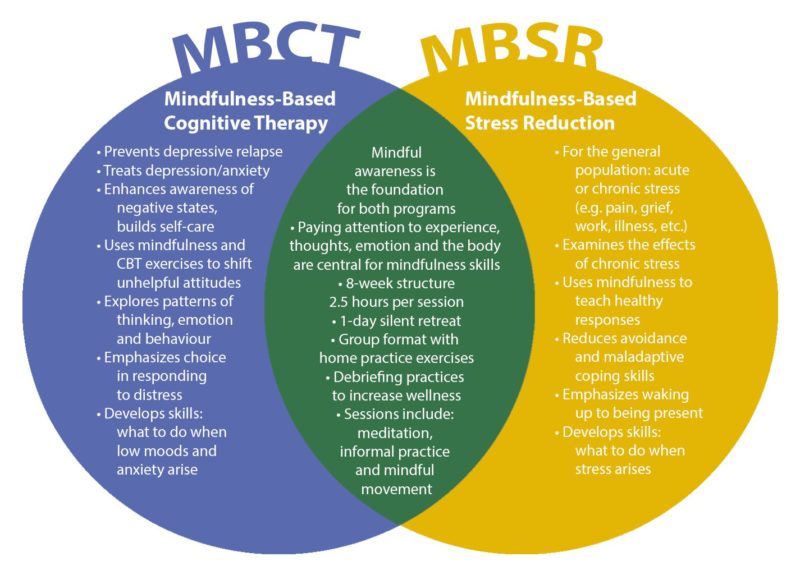 Every event and experience has its place and time. We already know that we can "disconnect" with them - and then they will not be able to harm us. So, there is no need to avoid anything.
Every event and experience has its place and time. We already know that we can "disconnect" with them - and then they will not be able to harm us. So, there is no need to avoid anything.
Present moment engagement
To be “here and now” means to treat life with interest and openness. It is the absence of anxiety about the past and the future. The ability to become involved in what is happening in the present moment is a key skill not only for ACT, but also for other areas of Third Wave CBT. nine0005
Values
In ACT sessions, the client defines his values and decides to live by them. When making a life choice, a person should ask himself: “How does this relate to my values?”.
The difference between CBT and ACT is that CBT looks at the content of the mind. For example, a person wakes up in the morning and thinks: "I will die a homeless person." The cognitive therapist will ask me to present arguments for and against this idea.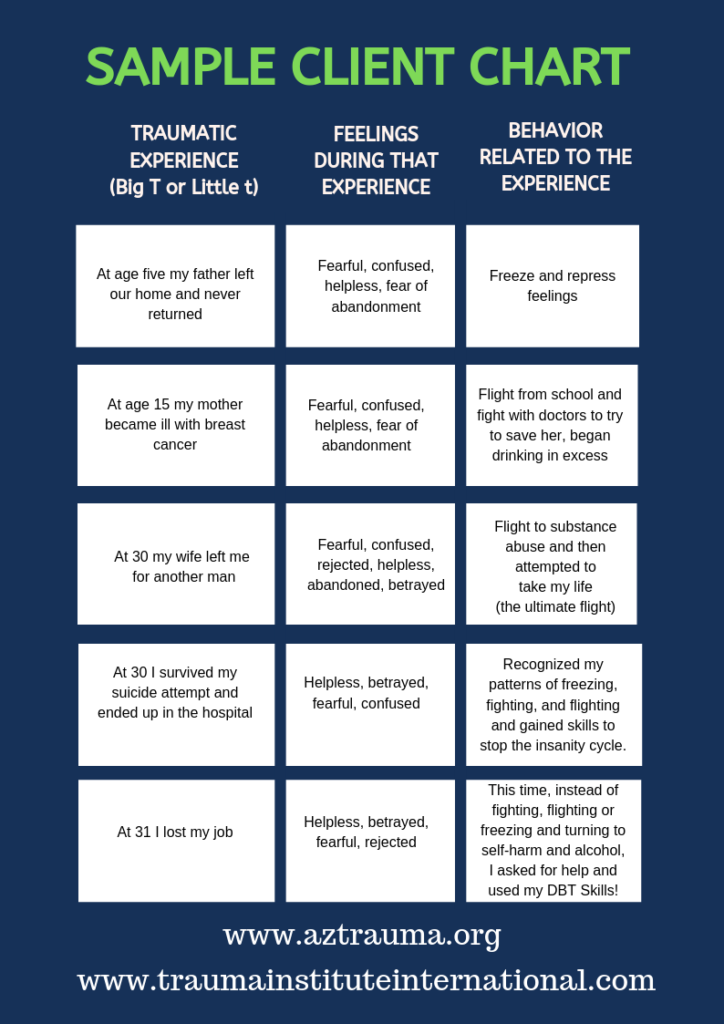 And the ACT therapist will ask, “Does this thought help you? Does it guide you to your values? We don't care if the thought is right or wrong. What matters is how it works. ACT's unspoken principle: "Truth is what works." nine0005
And the ACT therapist will ask, “Does this thought help you? Does it guide you to your values? We don't care if the thought is right or wrong. What matters is how it works. ACT's unspoken principle: "Truth is what works." nine0005
Anton Rusakov, psychologist, works in CBT of the third wave:
Committed Actions
It is not enough just to define values - in accordance with them, you need to set life goals and move towards them consistently. At the same time, negative thoughts and events do not interfere with a person and do not change his course. This is the final goal of ACT.
ACT teaches the client that discomfort is an integral part of life. It is impossible to avoid it all the time. But you can decide on your values and move towards your goals, regardless of it. nine0003
ACT sessions use many metaphors and thought experiments to achieve an effect. The effectiveness of ACT has been scientifically proven. It is especially recommended when working with anxiety disorders, depressive conditions and to support people who are faced with loss or an incurable illness.
It is especially recommended when working with anxiety disorders, depressive conditions and to support people who are faced with loss or an incurable illness.
ACT Metaphor: Imagine you want to swim in a pool. But there is a soccer ball floating there, which annoys you a lot. You enter the pool, forcefully push the ball under the water and hold it there. It turns out that the ball is under water, you can't see it. But now you can't swim - all your strength goes into holding the ball. So, maybe it's better to let him go, accept that he's swimming in the pool, and try to enjoy his vacation despite this? nine0005
Anton Rusakov, a psychologist working in Third Wave CBT:
Dialectical Behavioral Therapy: A Life Worth Living
Dialectical Behavioral Therapy (DBT) is designed to treat complex personality disorders in particular borderline personality disorder (BPD). The founder of the approach, Marsha Linehan, herself suffered from BPD.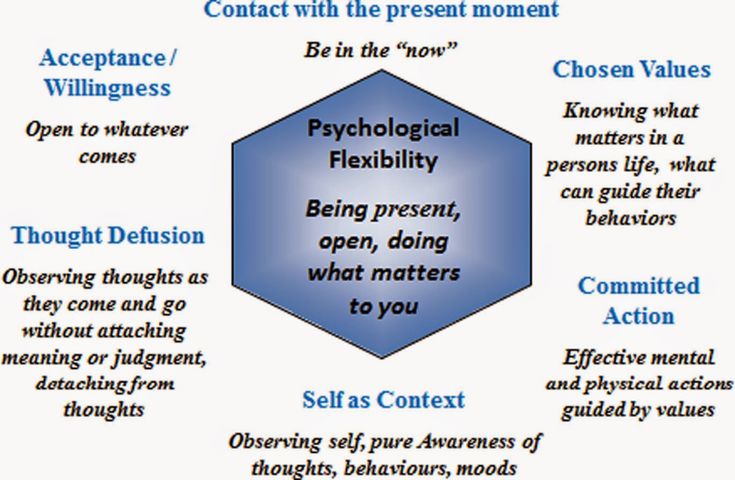 She could not be diagnosed for a long time, not to mention the correct therapy. Marsha hurt herself, could not establish a social life, spent most of her time in the hospital and did not understand what was happening to her. "Life in hell," as Marsha herself comments, continued until one day she had an epiphany. She felt that she could accept herself for who she was. This sense of acceptance helped her cope with emotional instability. Marsha Linehan began to study psychology and psychotherapy. She immediately decided that she would work with severe cases and suicidal people. Marsha's method was based on the idea of total acceptance. She used cognitive behavioral therapy techniques, as well as elements of Zen Buddhism, breathing techniques and meditation. Subsequently, this approach became known as DBT - Dialectical Behavior Therapy. nine0003
She could not be diagnosed for a long time, not to mention the correct therapy. Marsha hurt herself, could not establish a social life, spent most of her time in the hospital and did not understand what was happening to her. "Life in hell," as Marsha herself comments, continued until one day she had an epiphany. She felt that she could accept herself for who she was. This sense of acceptance helped her cope with emotional instability. Marsha Linehan began to study psychology and psychotherapy. She immediately decided that she would work with severe cases and suicidal people. Marsha's method was based on the idea of total acceptance. She used cognitive behavioral therapy techniques, as well as elements of Zen Buddhism, breathing techniques and meditation. Subsequently, this approach became known as DBT - Dialectical Behavior Therapy. nine0003
DBT has a special strict format of work:
Group therapy 2-3 hours every week
In a group with the help of a therapist, the client trains the skills of coping with emotions.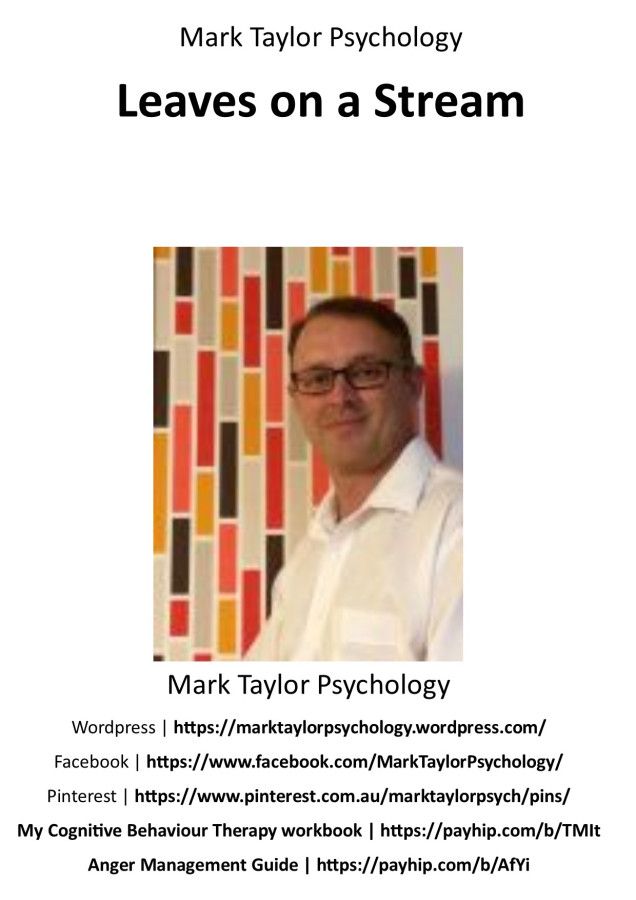 This is a key part of therapy, because it is the sphere of emotions and emotional responses that most often suffers from a personality disorder.
This is a key part of therapy, because it is the sphere of emotions and emotional responses that most often suffers from a personality disorder.
Individual therapy 1 hour per week
Personal work with a therapist helps the client to integrate the acquired skills into his life, work with thoughts and behavior. nine0005
Inter-session telephone consultation
If a client encounters a difficult situation in daily life, he can (by prior arrangement) call the therapist and receive the necessary support. The therapist will remind him of the strategies that the client has acquired in group and individual therapy, and negotiate with the client how he will apply them in the current situation.
Also, therapists who work in the DBT approach meet for group interviews and discuss their practice. Since they have to work with difficult, often suicidal clients, this stage is very important in order to avoid professional burnout.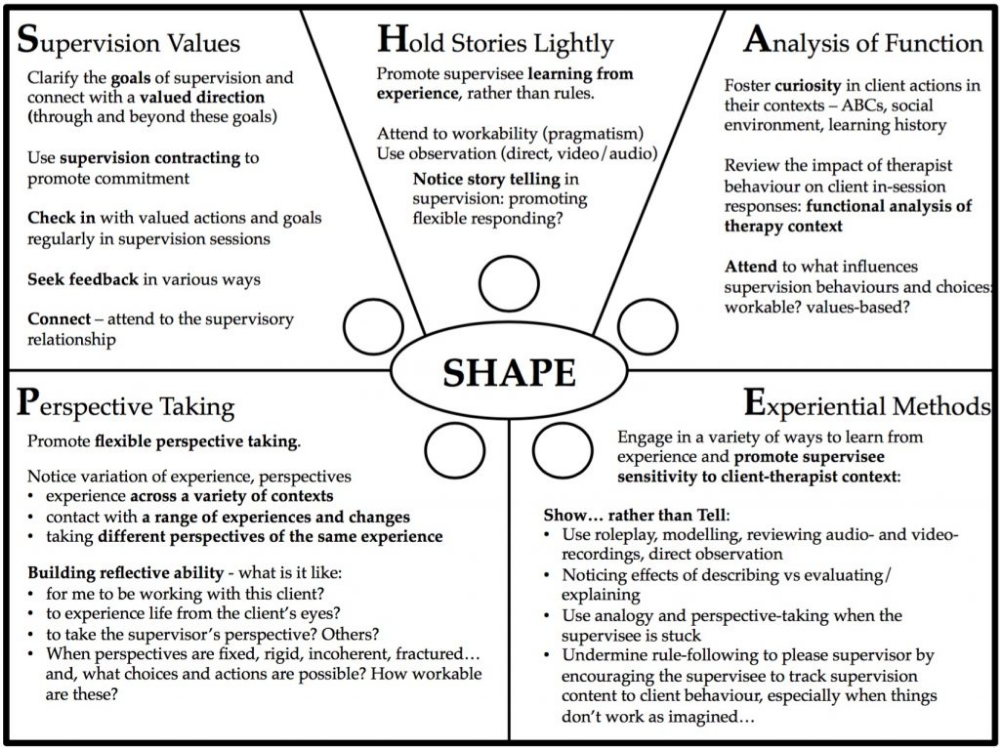 nine0003
nine0003
As a rule, working with a client consists of 4 stages. Stage 1 begins after the preparatory work. Since such therapy is a long laborious process, as a preparation, the therapist works with the client's motivation.
Behavior control
The task of this stage is to stop destroying your life. In therapy, the client forms strategies that help him survive emotional distress.
For example, a client takes alcohol every time he feels sad. We think about how we could have acted differently in this situation. Can a client call a relative every time they feel sad? What is the advantage of this behavior over drinking alcohol? We agree that the next time the client experiences this emotion, he will engage in non-destructive behavior. Or he will call me and I will help him cope and remember the skills of self-regulation. nine0005
Anton Rusakov, psychologist, works in third wave CBT:
Effective emotion regulation
This stage follows naturally from the first.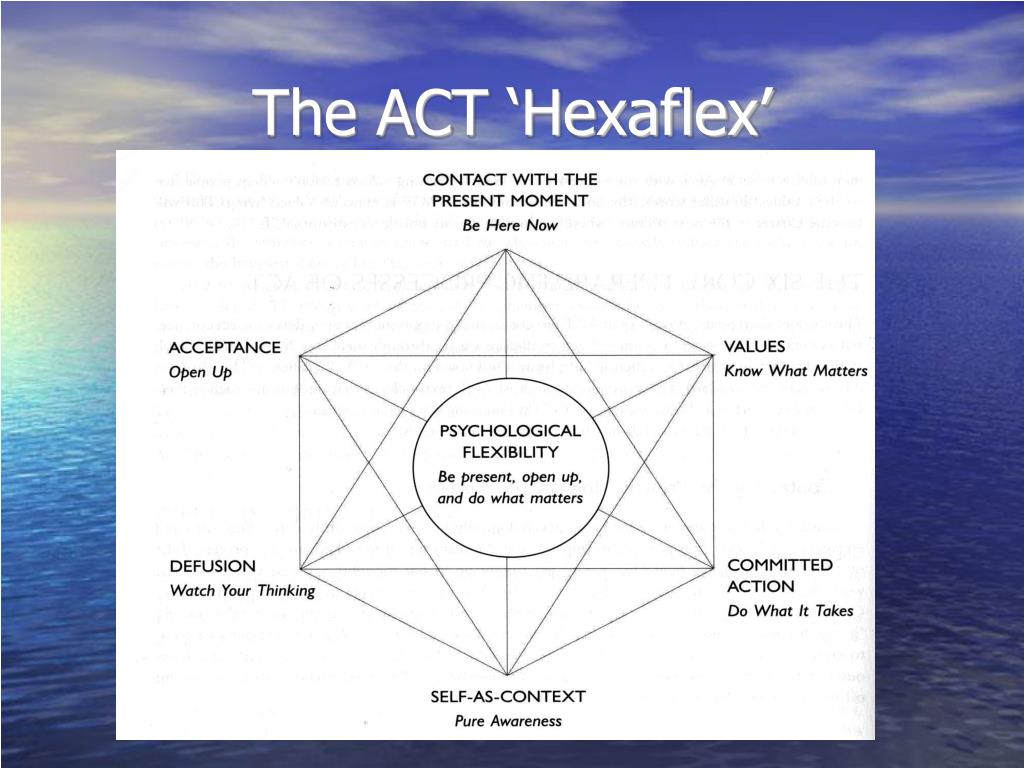 Those emotional regulation skills that all people normally have (listen to music, get distracted, talk with a friend, play sports) in people with a personality disorder may not be formed. In therapy, they are formed and worked out.
Those emotional regulation skills that all people normally have (listen to music, get distracted, talk with a friend, play sports) in people with a personality disorder may not be formed. In therapy, they are formed and worked out.
Finding “ordinary happiness and unhappiness”
At this stage, the therapist helps the client to build a normal life. The client learns to solve problems with work, school and relationships. He gets used to the fact that in life there are always both positive and negative things - and you can interact with them.
Finding a sense of joy, depth and freedom
This is the last stage of DBT, which is dedicated to building a happy and prosperous life. It is possible only after the client learns to solve everyday problems and effectively respond to different life situations. nine0005
The last two stages of DBT are similar in purpose and principles to ACT. The therapy lasts a long time - on average, it takes at least a year to achieve the effect. There are cases when the last stages of DBT last a lifetime - the client periodically visits a therapist, maintains the result and continues to improve his life.
There are cases when the last stages of DBT last a lifetime - the client periodically visits a therapist, maintains the result and continues to improve his life.
Mindfulness-based Cognitive Therapy
Mindfulness-based Cognitive Therapy (MBCT) is an approach that grew out of the Mindfulness-based Stress Reduction (MBSR) program. This is a short term approach averaging 8 weeks. Work takes place in groups of up to 12 people. The creators of the approach are Zindel Segal, Mark Williams and John Tisdale. nine0003
MBCT aims to get rid of automatic thoughts and reactions. This is facilitated by the practice of meditation, which increases awareness. Impartial observation of the flow of one’s own thoughts, separation from them, studying the sensations in one’s own body reduces the level of anxiety and allows one not to “fall” into the usual negative scenario.
During therapy, the client learns 4 important skills:
Get out of the “thinking pattern”
Recognize situations and conditions that lead to the launch of a negative “thinking pattern”
Treat these situations more consciously and deal with them differently
Do not avoid the difficulties and negative aspects of life.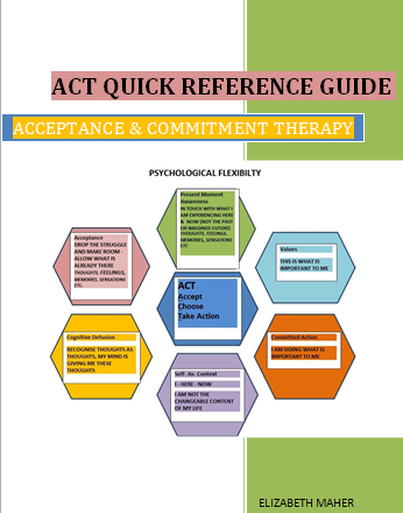
Initially targeted at depression, the approach has proven effective in anxiety disorders, chronic fatigue syndrome, and eating disorders.
Schema therapy
Schema is a model of behavior and a system of ideas about the world learned in childhood. Even if the scheme is maladaptive, does not correspond to reality and prevents a person from being happy, he continues to "work out" it in adulthood. Schema therapy was developed in 19Jeffrey Yang, a student of CBT founder Aaron Beck, in the 1990s. He noticed that for some clients with lingering problems, CBT may not be enough. They achieve a short-term effect and improve a specific area of life - but after a while they "roll back" to the previous level.
Young came to the conclusion that some people form early maladaptive schemas that they cannot just give up. The scheme is formed in childhood, when needs of children were insufficiently or inadequately satisfied.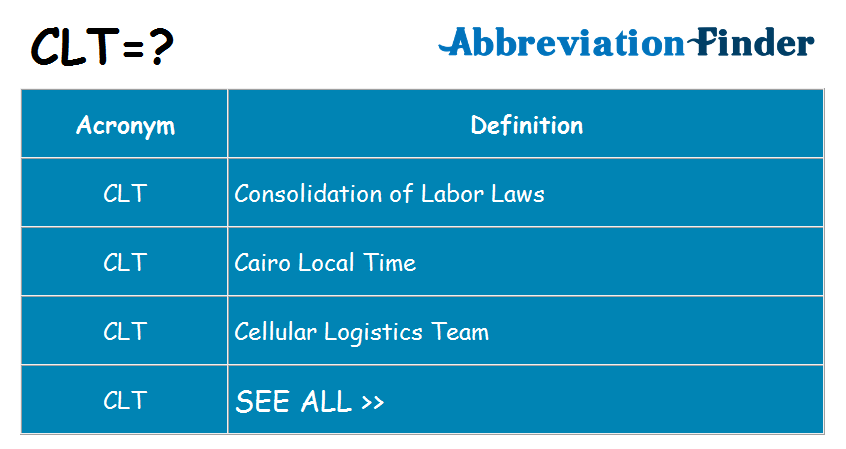 At that moment, the scheme served as a kind of protection. For example, a child feels insufficient care and support from their parents - and decides (because of their cognitive abilities) that all significant people will behave this way with them. He is ready for this in advance. As soon as someone important appears in his life, he will immediately prepare for alienation and coldness. In adulthood, such a person will unconsciously choose people who are not able to build healthy relationships. This will confirm his scheme and work on the principle of a "self-fulfilling prophecy". As long as the scheme works (even if it brings suffering), the world is stable, predictable and safe. That is why it is so difficult to abandon the scheme and standard CBT may not be enough. nine0005
At that moment, the scheme served as a kind of protection. For example, a child feels insufficient care and support from their parents - and decides (because of their cognitive abilities) that all significant people will behave this way with them. He is ready for this in advance. As soon as someone important appears in his life, he will immediately prepare for alienation and coldness. In adulthood, such a person will unconsciously choose people who are not able to build healthy relationships. This will confirm his scheme and work on the principle of a "self-fulfilling prophecy". As long as the scheme works (even if it brings suffering), the world is stable, predictable and safe. That is why it is so difficult to abandon the scheme and standard CBT may not be enough. nine0005
Young identified 18 maladaptive schemes that develop in connection with the dissatisfaction of basic needs in childhood:
The need for a reliable attachment of
The need for autonomy, competence and a sense of identity of
The need to freely express their feelings and needs of
consumption within boundaries
and self-control
The need for secure attachment
The need for autonomy, competence and a sense of identity
The need to freely express one's feelings and needs
The need for boundaries
and self-control
Abandonment
"Relationships with other people cannot be reliable: people will leave and leave me.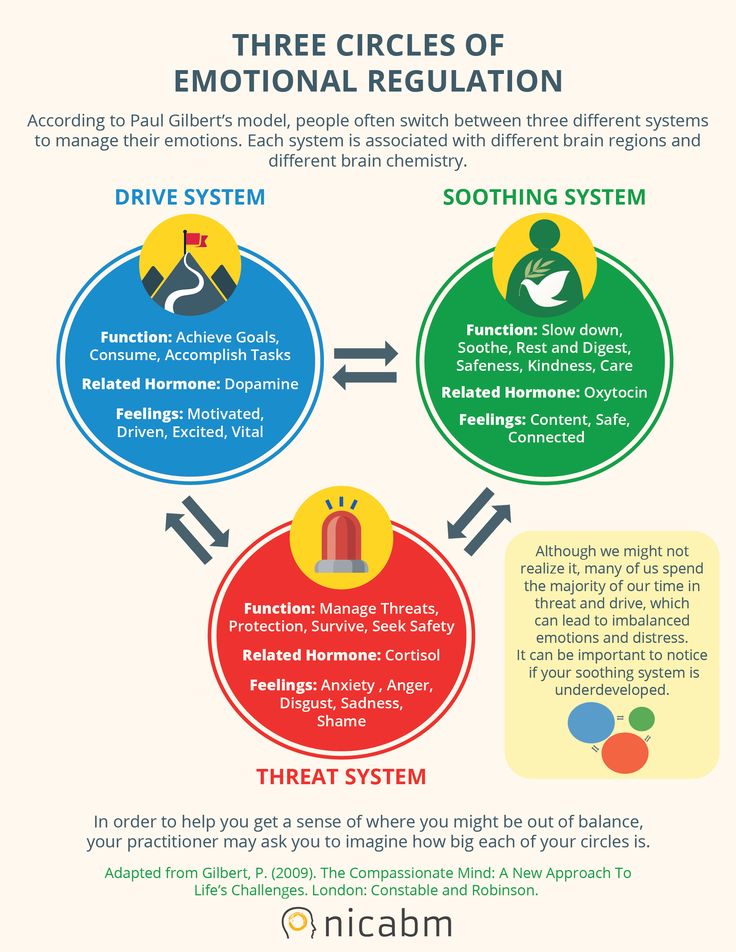 "
"
Distrust
"Relationships are not safe - people ingratiate themselves and then use me for their own purposes."
Emotional deprivation
“There is a wall between me and those around me. I can't build close relationships." nine0005
Social isolation
"I'm completely different, no one can understand me."
Defectiveness
"Something is wrong with me."
Addiction
"I can't do anything on my own."
Vulnerability
"The world is a dangerous place and there is nothing I can do about it."
Merge
"I can't be on my own, without another person life has no meaning." nine0005
Pessimism
"The world is a very dark place where bad things happen to people."
Doomed to failure, failure
"I can't do it."
Submission
"I must act as others want."
Self-sacrifice
"I have no right to take care of myself, because others are more important.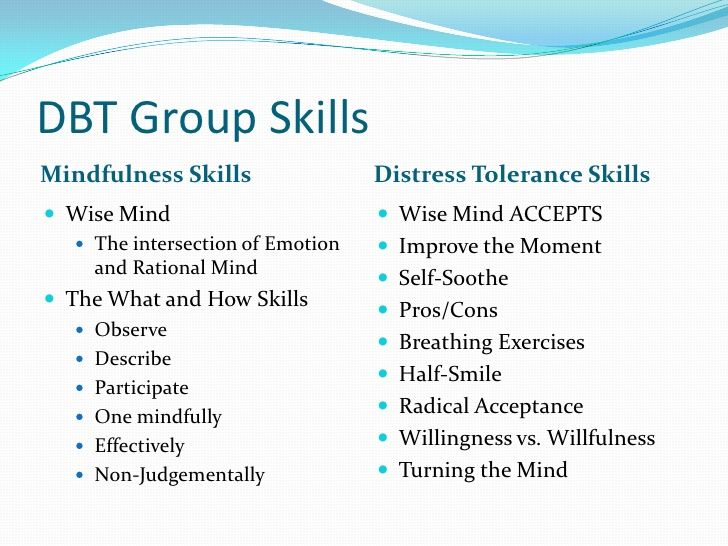 "
"
Seeking approval/recognition
“I don't know who I am. I rate myself the way you rate me." nine0005
Suppression of emotions
"Showing emotions is unacceptable."
Rigid standards
“I have to live up to the highest standards. You can always do a little better."
Punitiveness
"I must be punished for any mistake."
Grandiosity
"I am special and should always get what I want."
Lack of self-control
"I can't control my desires and actions." nine0005
The schema causes discomfort and pain because it is based on trauma. Therefore, people try to "cope" with it in different ways. Unfortunately, the methods are most often also maladaptive. There are 3 main coping strategies in schema therapy (from English coping - to cope) :
Surrender
The person passively follows the schema. For example, the “abandoned” chooses as partners only those people who are ready to leave him.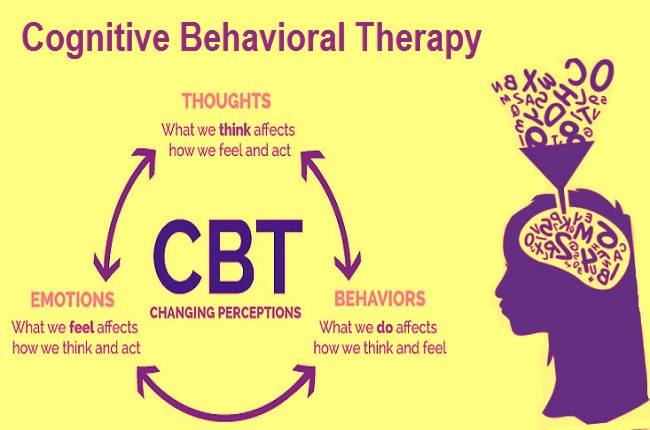
Avoidance
To avoid repeating the negative scenario, the person refuses to interact: does not build close relationships, does not tell anyone personal information, does not leave the house, etc.
Overcompensation , but does it in a deliberate or hypertrophied form. He leaves people first so that they do not leave him, he himself tries to manipulate or punish others in fear that they can do this to him. nine0005
Also in schema therapy there is the concept of mode . This is a certain set of schemes that “works” for a person at the moment. Each person has certain modes that he enters in different situations. It is very important for the therapist to understand what mode the client is in. This helps to "get through" to the part of the client that is responsible for the emergence of the schema.
The goal of schema therapy is to replace maladaptive schemas with healthier ones. To work with the thinking strategy, she uses techniques from CBT.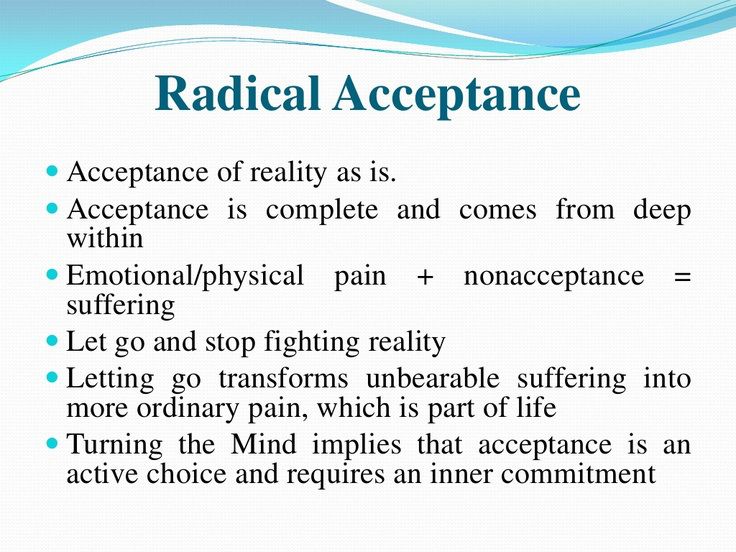 To work through the realm of feelings and emotional memory, the schema therapist uses Gestalt therapy techniques. Also in schema therapy is often used rescripting - "rewriting" of children's experience. The therapist gives special active imagination exercises in which the client helps the injured part of himself feel comfortable and safe.
To work through the realm of feelings and emotional memory, the schema therapist uses Gestalt therapy techniques. Also in schema therapy is often used rescripting - "rewriting" of children's experience. The therapist gives special active imagination exercises in which the client helps the injured part of himself feel comfortable and safe.
One of the important tools of schema therapy is the therapeutic relationship. The therapist "acts out" the role of a healthy parent. In this case, the client develops a trusting, secure relationship with the therapist. Often this is the first such experience that shows the client that such a relationship is possible. He can later transfer this experience to his life and to people outside the office. nine0005
Case study
“A few years ago a man approached me. He felt very bad, life consisted of the road to and from work. Spent a lot of time at home. I referred him to a psychiatrist, who diagnosed him with schizotypal personality disorder.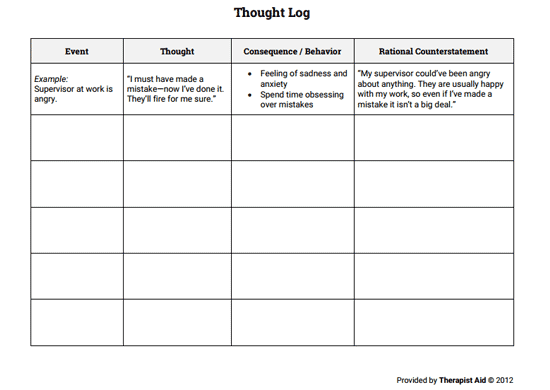 The client had a problem with motivation: he wanted to change his life, to do something, but it was very difficult to organize it. For example, he wanted to get a promotion at work, but could not approach his superiors and ask for it. The idea that after that he would be treated badly interfered. We used a method from CBT - "cognitive reappraisal". They also worked with emotions and "crazy ideas". I used techniques from ACT and taught the client to disidentify from their thoughts and emotions. As a result, the client began to understand that he has fears and negative thoughts, but he knows how to act in spite of them. Now he successfully communicates at work, builds friendly relations, has received a good status. Psychotherapy is still going on, but the progress is clear.” nine0005
The client had a problem with motivation: he wanted to change his life, to do something, but it was very difficult to organize it. For example, he wanted to get a promotion at work, but could not approach his superiors and ask for it. The idea that after that he would be treated badly interfered. We used a method from CBT - "cognitive reappraisal". They also worked with emotions and "crazy ideas". I used techniques from ACT and taught the client to disidentify from their thoughts and emotions. As a result, the client began to understand that he has fears and negative thoughts, but he knows how to act in spite of them. Now he successfully communicates at work, builds friendly relations, has received a good status. Psychotherapy is still going on, but the progress is clear.” nine0005
Ekaterina Cherepkova, psychologist, combines Gestalt therapy and CBT of the third wave:
What to read?
The Happiness Trap.
Harris Russ
A set of specific strategies that will help you change your life, get rid of anxiety and negative attitudes.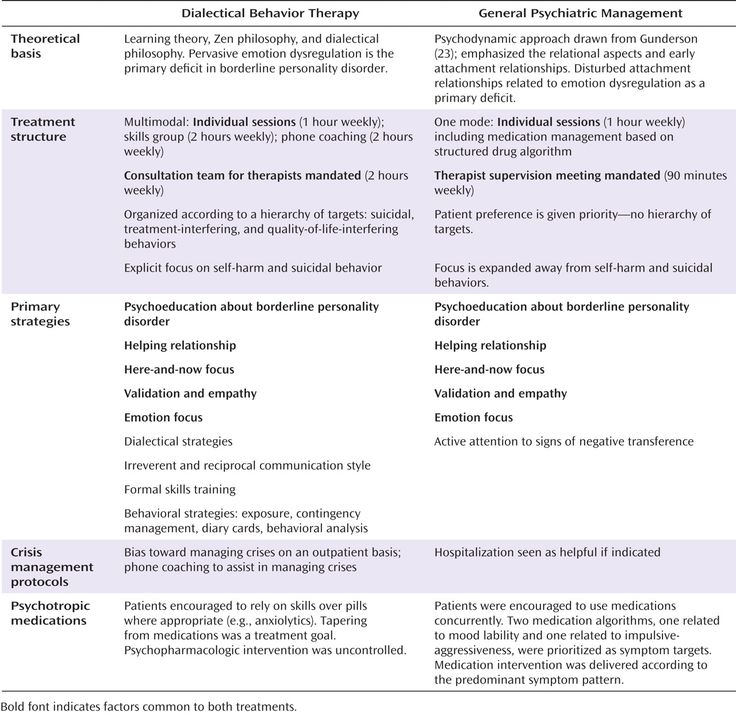 It is based on the main principle of ACT: the ability to accept the world and yourself.
It is based on the main principle of ACT: the ability to accept the world and yourself.
Get out of the vicious circle.
Jeffrey Young
This book will help you figure out exactly what pattern you're stuck in—and get out of it without losing yourself. It is also suitable for those who want to help loved ones cope with negative and self-destructive behavior. nine0005
“Wherever you go, you are already there.”
John Kabat-Zinn
The book is the practice of meditation. Helps to become aware of yourself in the current moment, to establish contact with yourself and better understand the path you are on.
"Destruction of negative thought patterns." Gitta Jacob
The author helps to get rid of negative attitudes in the same way as a therapist would do in schema therapy. The book is suitable both for independent work and as a supplement to work with a therapist. nine0005
FIND A PSYCHOLOGIST (ACT, SCHEMA THERAPY)
Did you find the material useful? Share it:
an overview of acceptance and responsibility therapy.
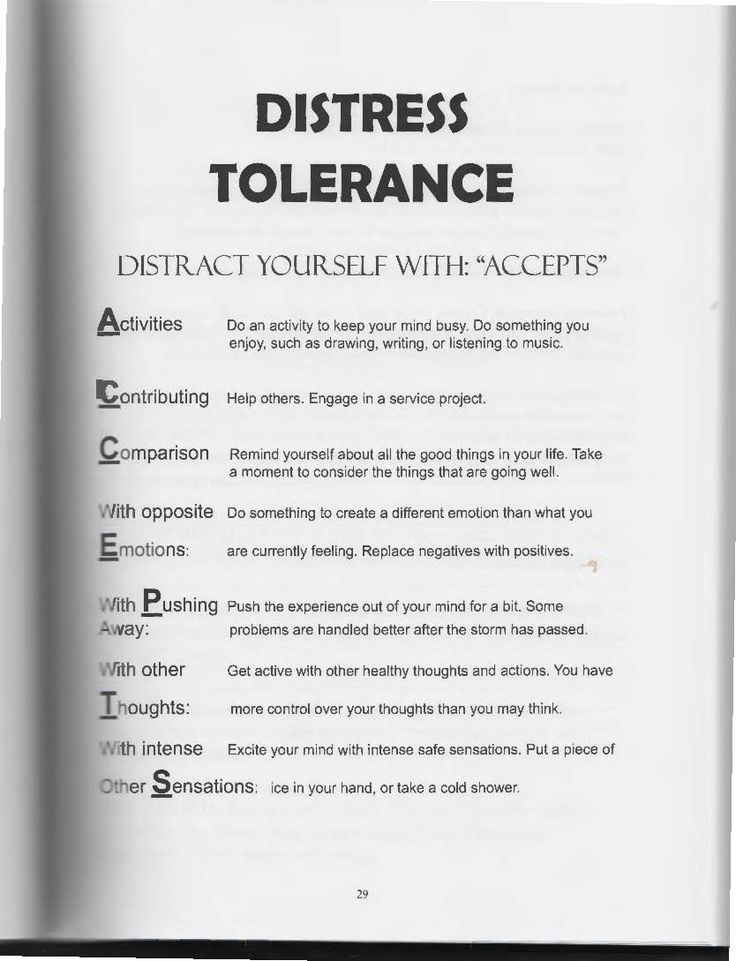 Part 1 - Eros and Cosmos
Part 1 - Eros and Cosmos Acceptance Commitment Therapy effectiveness in a wide range of clinical situations. In contrast to the concept of "healthy normality" characteristic of Western psychology, ACT admits that the psychological processes in the mind of a normal "healthy" person are often destructive and create psychological suffering. Relieving or reducing symptoms is not the goal of ACT: in this approach, it is believed that it is often the constant attempts to get rid of "symptoms" that lead to mental disorders. In this article (original in pdf), Russell Harris talks about how experiential avoidance and emotion control cause suffering and what the ACT offers as a solution. The examples below illustrate six key principles for developing resilience: cognitive separation, acceptance, contact with the present, observer position, values, and proactivity. nine0384 Imagine an approach that makes no attempt to get rid of the symptoms, but results in lessening of the symptoms as a side effect. Acceptance and Commitment Therapy (ACT) is a mindfulness-based behavioral approach that challenges the basic rules of most schools of Western psychology. ACT uses an eclectic mix of metaphors, paradoxes, and mindfulness practices, along with a wide range of experiences-related exercises and value-based behavior. ACT has proven effective in a wide range of clinical situations: depression, obsessive-compulsive disorder, work stress, chronic pain, stress in terminal cancer patients, anxiety disorders, post-traumatic stress disorder, anorexia, heroin and marijuana addiction, and even schizophrenia ( Zattle & Raines, 1989; Twohig, Hayes & Masuda, 2006; Bond & Bunce, 2000; Dahl, Wilson & Nilsson, 2004; Branstetter, Wilson, Hildebrandt & Mutch, 2004). Living a rich and meaningful life, accepting the pain that inevitably accompanies it, is the goal of Acceptance and Responsibility Therapy. ACT (eng. "act" - action) is a very apt abbreviation, since the basis of ACT is effective, value-driven actions in which we are fully involved. Only through conscious action can we fill our lives with meaning. Of course, in trying to do this, we will encounter various difficulties in the form of unpleasant and unwanted subjective experiences (thoughts, images, feelings, physical sensations, urges and memories). The mindfulness skills taught during ACT qualitatively increase the effectiveness of interacting with these subjective experiences. nine0003 To live a rich and meaningful life, accepting the pain that inevitably accompanies it, is the goal of acceptance and responsibility therapy When I talk to clients about mindfulness, I define it as the ability to "deliberately bring attention to your here-and-now experiences with openness, interest, and receptivity. Mindfulness is the ability to consciously bring attention to your here-and-now experiences with openness, interest, and receptivity ACT is one of the so-called third wave behavioral therapies, along with Dialectical Behavior Therapy ( Dialectical Behavior Therapy - DBT), as well as cognitive therapy and mindfulness-based stress reduction practices ( Mindfulness-Based Cognitive Therapy - MBCT, Mindfulness-Based Stress Reduction - MBSR) all focus on developing mindfulness skills. Behavioral therapies of the first wave (50s and 60s) focused on explicit behavioral changes and practical techniques related to the principles of operant or classical conditioning. In the second wave (70s), cognitive interventions were the key strategy. Cognitive Behavioral Therapy ( Cognitive-behavior therapy - CBT) eventually became dominant in the second wave. ACT is different from other third wave therapies in many ways. MBSR and MBCT are, in fact, treatment protocols designed for use in groups in the treatment of stress and depression. DBT is usually practiced as a combination of group skill training and individual therapy; it was developed primarily for group treatment of borderline personality disorder. In contrast, ACT can be used individually, in couples and in groups, in both short and long term therapy, for a wide range of clients. Another important difference with ACT is that meditation is just one of many ways to train mindfulness skills, divided into 4 categories: acceptance, cognitive separation, present contact, and observer position. The range of ACT tools that develop these skills is vast, from traditional breath meditation to cognitive separation techniques, and continues to grow. ACT is the only psychotherapeutic approach developed in conjunction with its own core research program in human language and cognition, Relational Frame Theory (RFT). Within the scope of this article, it is not possible to describe the RFT in detail, however, the reader can independently study the information on this site. nine0003 Symptom management is not the goal of ACT, which sets it apart from most psychotherapeutic approaches. Prolonged attempts to get rid of "symptoms" often lead to clinical disorders The purpose of ACT is to transform our interaction with unpleasant thoughts and feelings so that we no longer perceive them as "symptoms." Instead, we learn to see them as harmless, if uncomfortable, passing psychological events. Ironically, this process is what leads to symptom relief—but as a side effect, not the main one. Another unique feature is that ACT does not rely on the assumption of "healthy normality". Western psychology is based on the assumption of healthy normality, according to which people are inherently psychologically healthy, and if they are surrounded by a healthy environment and social context (with opportunities for self-fulfillment), if they lead a healthy lifestyle, then they will naturally be happy and satisfied. Why is this assumption considered wrong in the ACT? If we look at the statistics, we find that every year almost 30% of the adult population suffers from some form of officially recognized mental disorder (Kessler et al, 1994). The World Health Organization ranks depression as the world's fourth most costly and debilitating disease, and by 2020 it will be number two. One tenth of the adult population suffers from a clinical form of depression on a weekly basis, and one in five - at least once in a lifetime (Davies, 1997). Moreover, one in four adults at one time or another in life becomes addicted to drugs or alcohol. As of 1994, there were over 20 million alcoholics in the United States alone. nine0003 Despite the fact that our standard of living is the highest in the history of mankind, psychological suffering surrounds us on all sides An even more striking and sobering discovery is that almost every second person during his life at least once seriously thinks about suicide, and struggles with these ideas for two weeks or more. In addition, the variety of forms of psychological suffering that do not meet the criteria for clinical disorder should be taken into account - loneliness, boredom, alienation, sense of meaninglessness, low self-esteem, existential anxiety and pain associated with problems such as racism, hazing, gender discrimination, domestic violence and divorce. Obviously, despite the fact that our standard of living is the highest in the history of mankind, psychological suffering surrounds us from all sides. nine0003 ACT suggests that the psychological processes of the human mind are often destructive and sooner or later create psychological suffering. Moreover, from the point of view of ACT, the root of this suffering lies in human language itself. Human language is a very complex system of symbols, including words, images, sounds, facial expressions and gestures. ACT suggests that the psychological processes of the human mind are often destructive and sooner or later create psychological suffering It is now clear that the mind is not a "thing" or "object". Rather, it is a whole complex of cognitive processes, such as analysis, comparison, evaluation, planning, recall, visualization, and all these processes rely on human language. For this reason, ACT uses the word "mind" as a metaphor for human language itself. nine0003 Unfortunately, the tongue is a double-edged sword. On the one hand, it helps us create maps and models of the world; predict and plan for the future; share knowledge; study the past; imagine things that never existed and go further by creating them; improve the rules that effectively govern our activities and help us succeed as a community; interact with people at a great distance and learn from people who have already left our world. The dark side of language is its use to lie, manipulate and deceive; spread slander, slander and ignorance; provoke hatred, prejudice and violence; create weapons of mass destruction and industries that pollute the planet; get stuck and relive painful events from the past; scare yourself by imagining an unpleasant future; compare, judge, criticize, blame both yourself and others; create rules for themselves, which can often be restrictive and destructive. nine0003 ACT is based on the assumption that human language naturally creates psychological suffering for all of us. Specifically, by engaging us in wrestling with our own thoughts and feelings, a process called "experience avoidance." Probably the most important evolutionary advantage of human language is its ability to anticipate and solve problems. This allowed us not only to change the face of the planet, but also to travel beyond its limits. nine0003 The essence of the problem-solving mechanism is as follows: Of course, this approach works well in the material world. Wolf at the door? Get rid of it. Throw a stone or a spear at him, or shoot him. Snow, rain, hail? OK, you can't get rid of them, but you can avoid them by hiding in a cave or building a shelter. Dried soil? You can get rid of it with irrigation or fertilizer, or avoid it by moving to a more suitable location. Therefore, problem-solving strategies are an adaptive advantage for us as a species (indeed, training in such skills has proven to be effective in treating depression). nine0003 Given that these approaches to problem solving work well in the outer world, it is only natural that we try to apply them to the problems of the inner world—our psychological world of thoughts, feelings, memories, physical sensations, and desires. Unfortunately, when we try to avoid or get rid of unwanted subjective experiences, we only create more suffering for ourselves. Almost any addiction begins with an attempt to avoid or get rid of unwanted thoughts and feelings The more time and effort we spend trying to avoid or get rid of unwanted subjective experiences, the more psychological suffering we experience in the long run. An anxiety disorder is a good example. It is not the presence of anxiety in itself that leads to a mental disorder. Worry is a natural emotion that we all have. At the heart of any anxiety disorder is a strong preoccupation with the desire to avoid or get rid of anxiety. Obsessive-compulsive disorder (OCD) is a prime example of this. I never cease to be amazed at the intricate rituals that OCD sufferers invent in a futile attempt to rid themselves of anxiety-producing thoughts and images. Numerous studies show that increased subjective experience avoidance is correlated with anxiety disorders, depression, decreased work productivity, increased drug abuse, lower standard of living, risky sexual behavior, borderline personality disorder, greater post-traumatic stress disorder, long-term impotence, and difficulty recognizing and describing one's own emotions (alexithymia). nine0003 Of course, not all forms of avoidance of subjective experiences are unhealthy. For example, a glass of wine before bed is an avoidance, but most likely harmless. However, if you drink a whole bottle of wine every night, it will be very dangerous in the long run. ACT focuses on avoidance strategies only when people use them to the point that they become costly, life-threatening, and destructive. As an alternative to avoiding experiences, ACT offers clients a range of different techniques. Clients often come to counseling with the goal of taking control of their emotions. They want to get rid of depression, anxiety, addiction to alcohol, traumatic memories, low self-esteem, fear of rejection, anger, longing, and so on. Thus, ACT therapy focuses on two key processes - developing the ability to accept unwanted subjective experiences that are beyond our control, as well as commitment to actions that lead to living life according to our values. The following is a short description of several key ACT techniques illustrated with examples from sessions with a client named Michael. At this step, the client's task, which he initially comes with, to control his emotions, is respectfully and carefully questioned. Michael, a 35-year-old accountant who suffers from severe social anxiety disorder, has gone to many psychotherapists to no avail. In our first meeting, we discussed a large number of strategies that he used to avoid or get rid of social anxiety. Among them were: drinking alcohol, taking sedatives (Valium), the “good listener” strategy (asking many questions while remaining closed), arriving late, leaving early, avoiding social events entirely, deep breathing, relaxation techniques, using positive affirmations, challenging negative thoughts, reviewing childhood experiences, blaming the parents (they were just as withdrawn), self-hypnosis in the spirit of “just do it!”, self-hypnosis, etc. In this step, we increase the client's awareness of the fact that emotion control strategies are largely the cause of the problems. And while he is fixated on trying to control his well-being, he is trapped in a vicious spiral of increasing suffering. The following metaphors are very appropriate here: "quicksand", "resistance switch", as well as the concepts of "clean" and "dirty" discomfort. Let's take a closer look at these metaphors. nine0003 While a person is fixated on trying to control his well-being, he is trapped in a vicious spiral of increasing suffering Remember the old movie where the bad guy falls into a pit of quicksand? The more he fights it, the faster he gets sucked in. The same principle applies to painful sensations: the more we fight them, the more they take over. Imagine there is a “fight switch” somewhere behind the mind. When it is in the ON position, we will fight any physical or emotional pain. Whatever uncomfortable experiences arise, we will try our best to either avoid them or get rid of them. Let us assume that our emotion is anxiety. If the switch is in the ON position, this emotion is completely unacceptable for us. This means that we will definitely begin to resent this anxiety: “How dare such emotions manifest in me?” Or be sad: “Again! Why do I always feel so lousy?" Or worrying about the anxiety itself: “What is wrong with me? How will this anxiety affect my body?” Or even experience some mixture of different similar emotions. But what happens if we move the switch to the OFF position? What if any emotions come up - no matter how unpleasant they are - and we don't fight them? So, if something worries us, it's not a problem. Of course, they remain unpleasant. We don't like it, we don't want it, but at the same time it's not fatal. When the switch is in the OFF position, our anxiety can increase or decrease depending on the situation. Sometimes it will be strong, sometimes it will be weak, and sometimes it will not be at all. More importantly, we don't waste our time and energy resisting it. nine0003 Without resisting, we get a natural level of physical or emotional discomfort, which depends on who we are and what situation we are in. At ACT, we call this "pure discomfort." And it is impossible to avoid it - life presents us with such "pure" discomfort in one form or another. When we resist, we begin to feel anger about our anxiety, anxiety about anger, or guilt about feeling guilty Obviously, these metaphors adapt to the specific experiences the person is struggling with. In the ON position, we don't just suffer emotionally about our own feelings, we also do our best to get rid of them or avoid them, regardless of the cost of the long-term consequences of such actions. We draw clients' attention to the many ways they have tried to control their emotions, from the more obvious ones like drugs, alcohol, overeating, TV, gambling, smoking, sex, surfing the internet, to the less obvious ones like endless rumination, blaming yourself, blaming others, and so on. ***
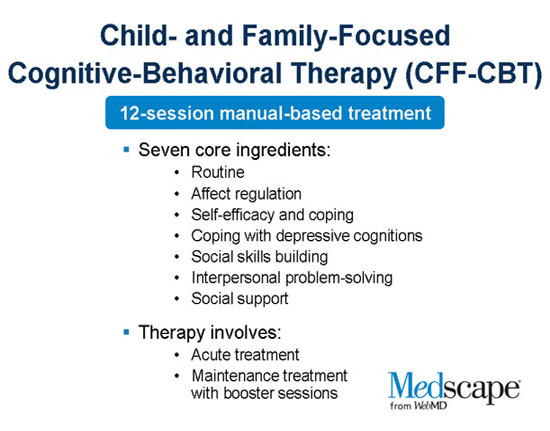 An approach that is firmly rooted in the traditions of empirical science, while emphasizing values, forgiveness, acceptance, compassion, living in the present moment, and achieving a transcendent sense of self. An approach that is so difficult to categorize that it has been described as "existential humanistic CBT." nine0003
An approach that is firmly rooted in the traditions of empirical science, while emphasizing values, forgiveness, acceptance, compassion, living in the present moment, and achieving a transcendent sense of self. An approach that is so difficult to categorize that it has been described as "existential humanistic CBT." nine0003 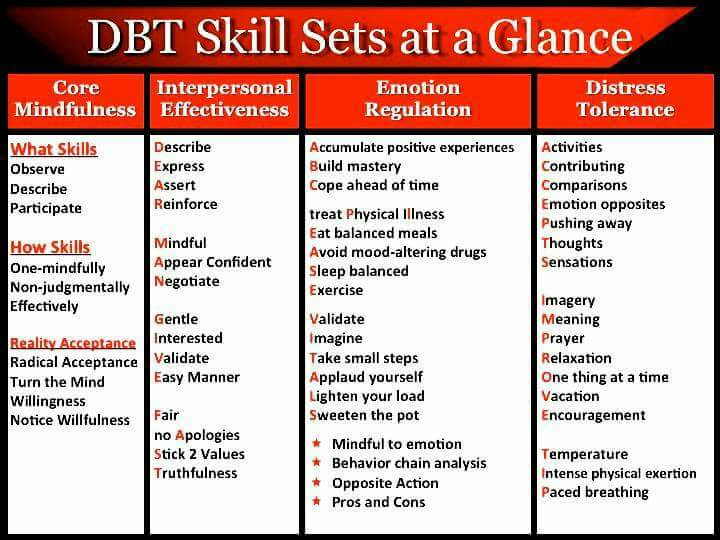 A study by Bach and Hayes (2002) showed that just a four-hour course of ACT resulted in patients with schizophrenia visiting hospitals half as often over the next six months.
A study by Bach and Hayes (2002) showed that just a four-hour course of ACT resulted in patients with schizophrenia visiting hospitals half as often over the next six months. The Goal of Acceptance and Responsibility Therapy
What is mindfulness?
 " There are many aspects of mindfulness, such as living in the present moment; full involvement in activity instead of wandering in thoughts; allowing feelings to be as they are—watching them come and go instead of trying to control them. When we observe our subjective experiences with openness and receptivity, even the most painful thoughts, feelings, physical sensations, and memories can become less threatening and unbearable. In this way, mindfulness can help change our relationship with painful thoughts and feelings in a way that reduces their impact on our lives. nine0003
" There are many aspects of mindfulness, such as living in the present moment; full involvement in activity instead of wandering in thoughts; allowing feelings to be as they are—watching them come and go instead of trying to control them. When we observe our subjective experiences with openness and receptivity, even the most painful thoughts, feelings, physical sensations, and memories can become less threatening and unbearable. In this way, mindfulness can help change our relationship with painful thoughts and feelings in a way that reduces their impact on our lives. nine0003 How is acceptance and responsibility therapy different from other mindfulness-based approaches?
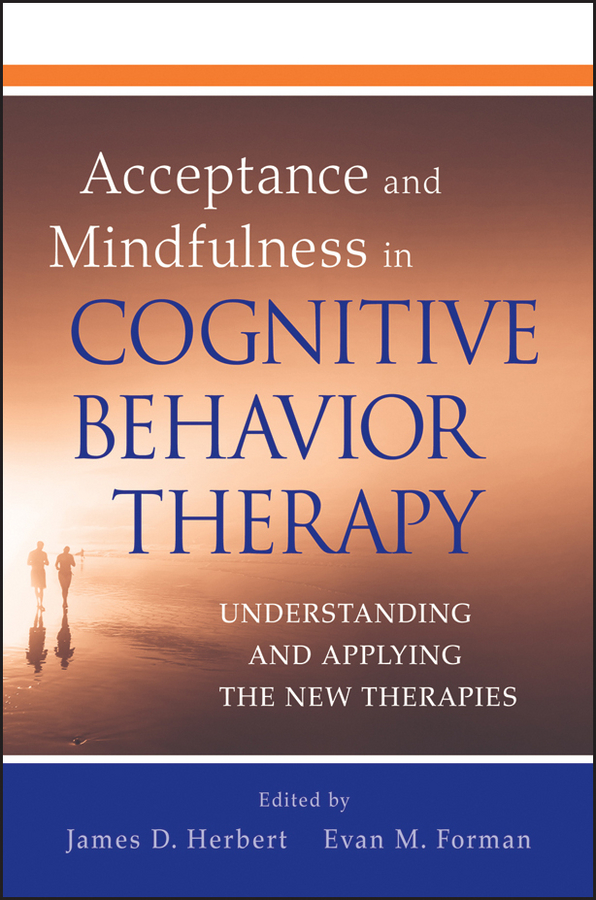 Founded in 1986 by Steve Hayes, ACT was the first of these third wave therapeutic approaches. There is now a large amount of empirical evidence supporting its effectiveness.
Founded in 1986 by Steve Hayes, ACT was the first of these third wave therapeutic approaches. There is now a large amount of empirical evidence supporting its effectiveness. 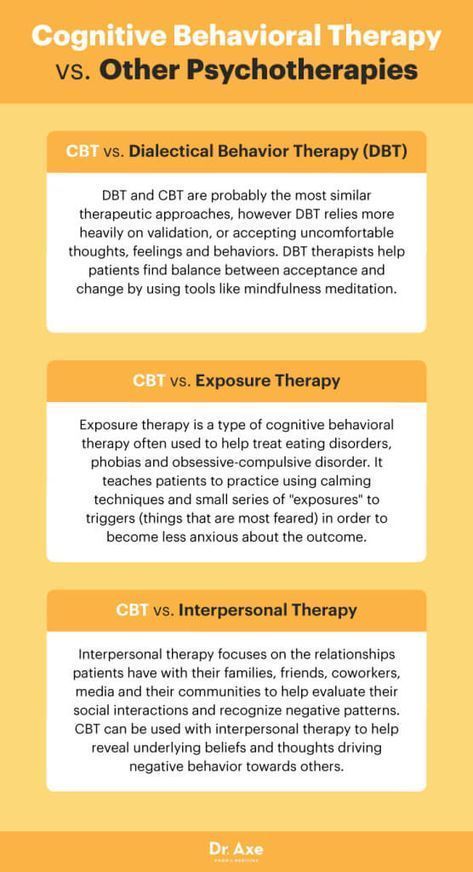 In addition, ACT allows you to create various mindfulness techniques, including with the client, and optimize them for specific tasks and situations, instead of following rigid instructions. nine0003
In addition, ACT allows you to create various mindfulness techniques, including with the client, and optimize them for specific tasks and situations, instead of following rigid instructions. nine0003 What is unique about acceptance and responsibility therapy?
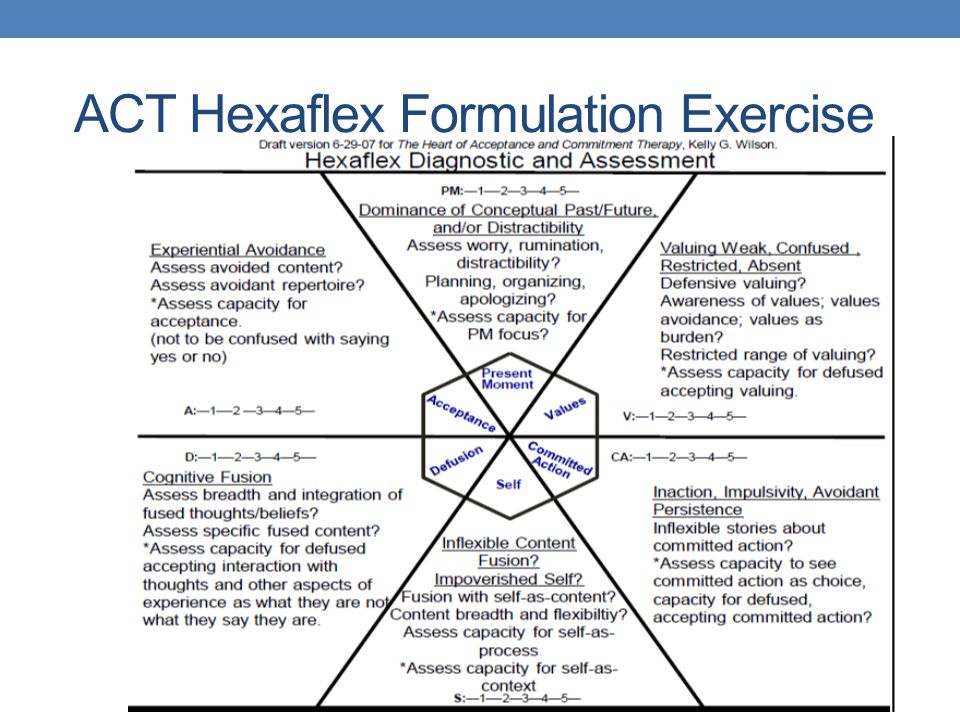 ACT is based on the assumption that prolonged attempts to get rid of "symptoms" often lead to clinical disorders. As soon as a subjective experience is labeled as a "symptom", there is an immediate struggle with it, because a "symptom" by definition is something pathological, something that needs to be eliminated.
ACT is based on the assumption that prolonged attempts to get rid of "symptoms" often lead to clinical disorders. As soon as a subjective experience is labeled as a "symptom", there is an immediate struggle with it, because a "symptom" by definition is something pathological, something that needs to be eliminated. Healthy normality
 From this point of view, psychological suffering looks like something abnormal - an illness caused by an uncharacteristic pathological process.
From this point of view, psychological suffering looks like something abnormal - an illness caused by an uncharacteristic pathological process.  Even worse, one in ten will attempt suicide at some point (Chiles and Strosahl, 1995).
Even worse, one in ten will attempt suicide at some point (Chiles and Strosahl, 1995). Destructive normality
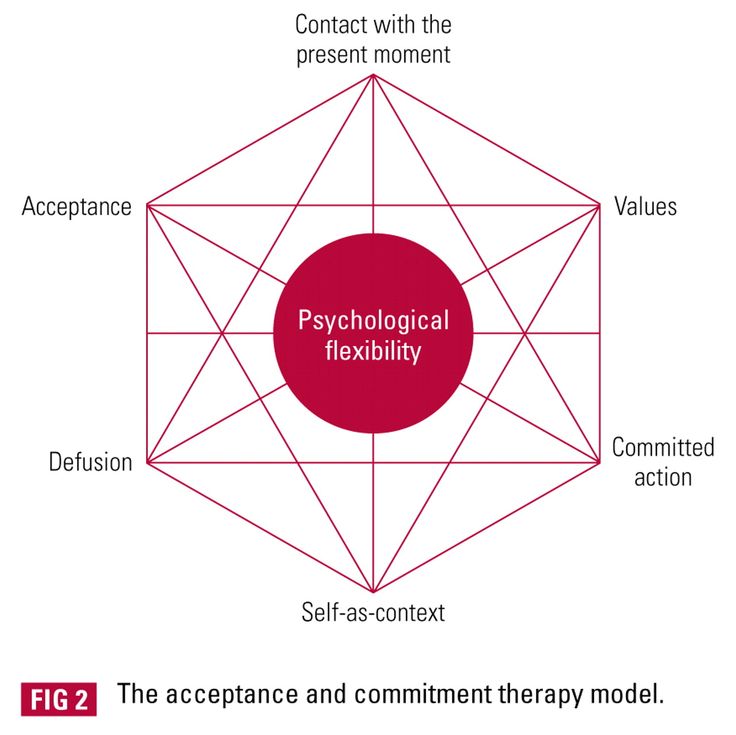 We use language in two forms - public and private. Public use of language includes speaking, negotiating, miming, gesturing, writing, drawing, singing, dancing, etc. Private use of language includes thinking, imagining, fantasizing, planning, visualizing, etc. A more technical term for private use of language is − cognitive activity. nine0003
We use language in two forms - public and private. Public use of language includes speaking, negotiating, miming, gesturing, writing, drawing, singing, dancing, etc. Private use of language includes thinking, imagining, fantasizing, planning, visualizing, etc. A more technical term for private use of language is − cognitive activity. nine0003 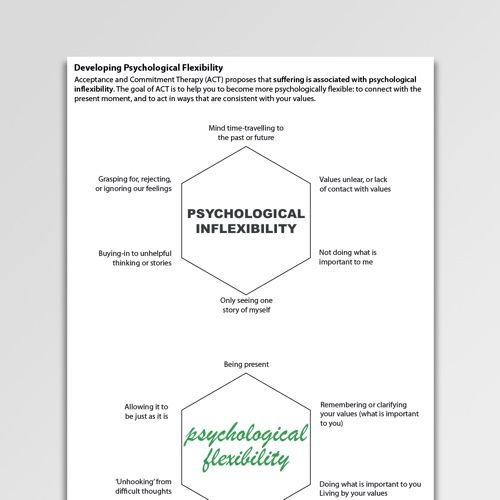
Experience avoidance
Problem = something we don't want.
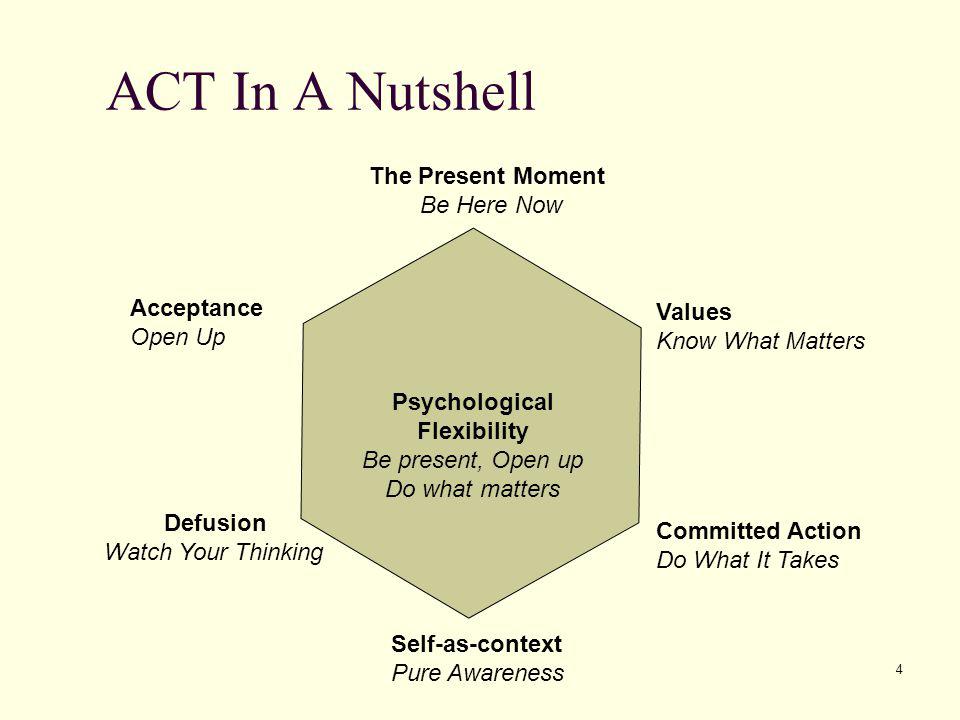
Solution = figure out how to get rid of it, or avoid it.
 For example, virtually every addiction known to mankind begins with an attempt to avoid or get rid of unwanted thoughts and feelings such as boredom, loneliness, anxiety, depression, etc. The addictive activities then begin to support themselves as they provide a quick and easy way to get rid of cravings or relieve symptoms. nine0003
For example, virtually every addiction known to mankind begins with an attempt to avoid or get rid of unwanted thoughts and feelings such as boredom, loneliness, anxiety, depression, etc. The addictive activities then begin to support themselves as they provide a quick and easy way to get rid of cravings or relieve symptoms. nine0003 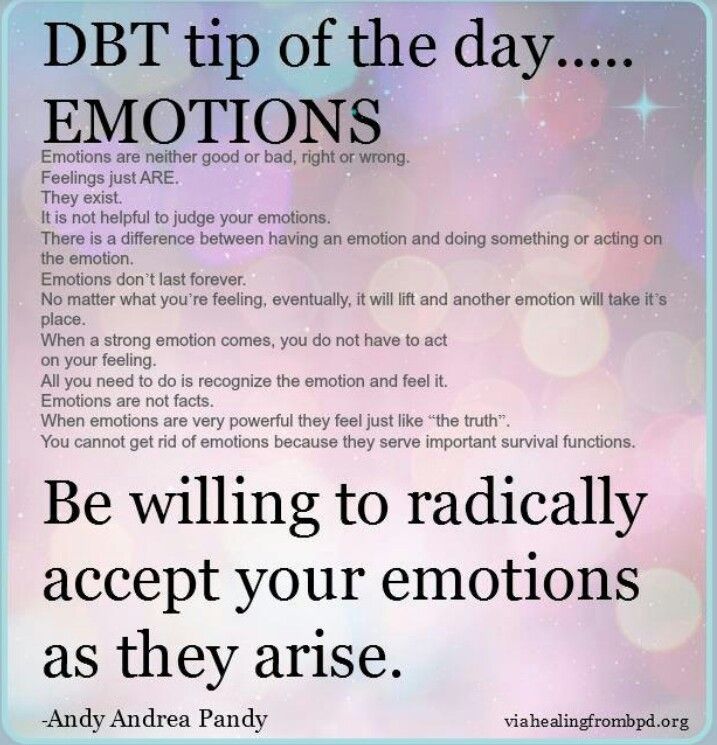 Unfortunately, the more important we consider getting rid of anxiety, the more we worry about that anxiety, thereby exacerbating it. This vicious cycle is at the heart of any anxiety-related psychiatric disorder. What is a panic attack if not worry about worry? nine0003
Unfortunately, the more important we consider getting rid of anxiety, the more we worry about that anxiety, thereby exacerbating it. This vicious cycle is at the heart of any anxiety-related psychiatric disorder. What is a panic attack if not worry about worry? nine0003 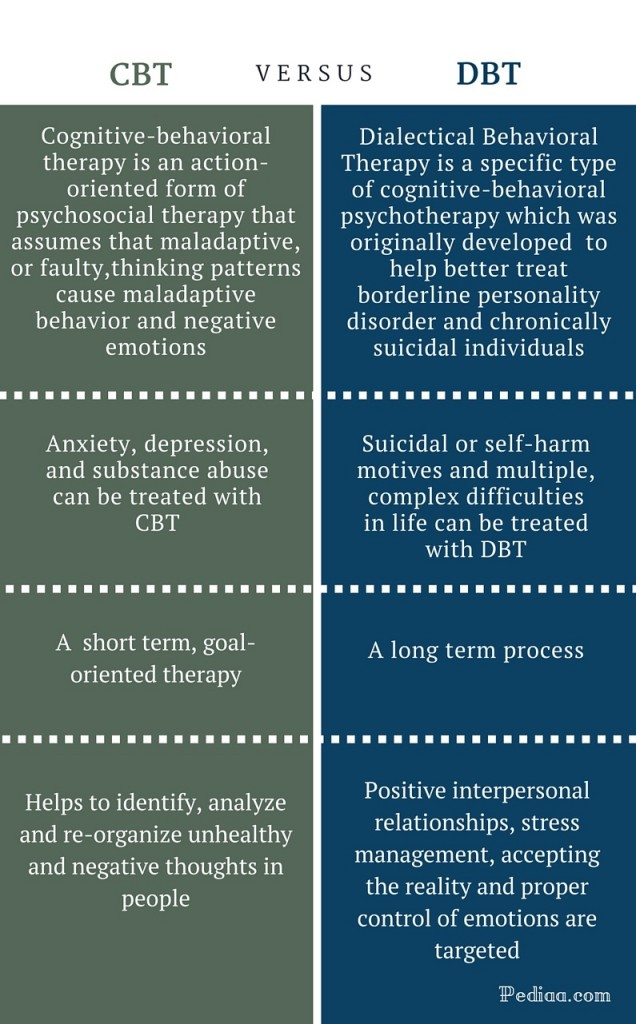 ACT calls them "emotion control strategies" because they try to directly control how we feel. Many of the emotion control strategies that people use to try to feel better (or "less bad") work in the short term but are often expensive and damaging in the long run. For example, a depressed person often begins to communicate less with other people in order to avoid uncomfortable thoughts - "I am a burden", "I have nothing to say", "I will not enjoy" - and unpleasant emotions such as anxiety, fatigue, fear of rejection. Withdrawal may bring a temporary sense of relief, but in the long run, social isolation will drive the person deeper into depression. nine0003
ACT calls them "emotion control strategies" because they try to directly control how we feel. Many of the emotion control strategies that people use to try to feel better (or "less bad") work in the short term but are often expensive and damaging in the long run. For example, a depressed person often begins to communicate less with other people in order to avoid uncomfortable thoughts - "I am a burden", "I have nothing to say", "I will not enjoy" - and unpleasant emotions such as anxiety, fatigue, fear of rejection. Withdrawal may bring a temporary sense of relief, but in the long run, social isolation will drive the person deeper into depression. nine0003 Therapy
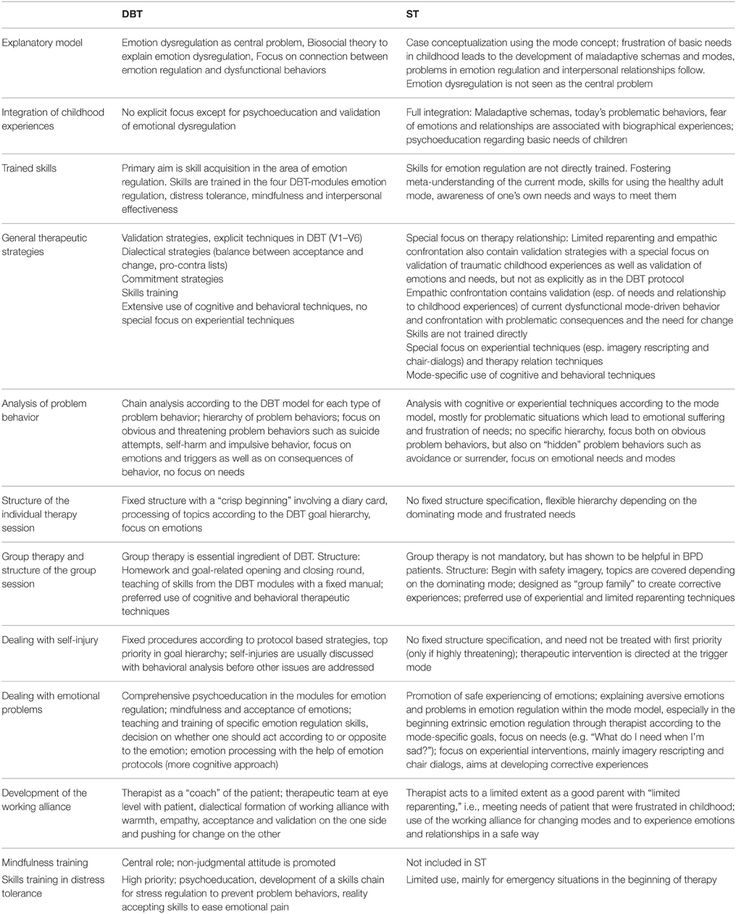 In ACT, we make no attempt to reduce, change, avoid, suppress, or control these subjective experiences. Instead, clients learn to reduce the impact of unwanted thoughts and feelings through the effective use of mindfulness. Clients learn to stop fighting with their experiences, learn to open up to them, give them space, and let them come and go without a fight. The time, energy and money that used to be spent trying to control your feelings can now be invested in taking effective action (based on your values) in order to change lives for the better. nine0003
In ACT, we make no attempt to reduce, change, avoid, suppress, or control these subjective experiences. Instead, clients learn to reduce the impact of unwanted thoughts and feelings through the effective use of mindfulness. Clients learn to stop fighting with their experiences, learn to open up to them, give them space, and let them come and go without a fight. The time, energy and money that used to be spent trying to control your feelings can now be invested in taking effective action (based on your values) in order to change lives for the better. nine0003 Contrary to the client's plans
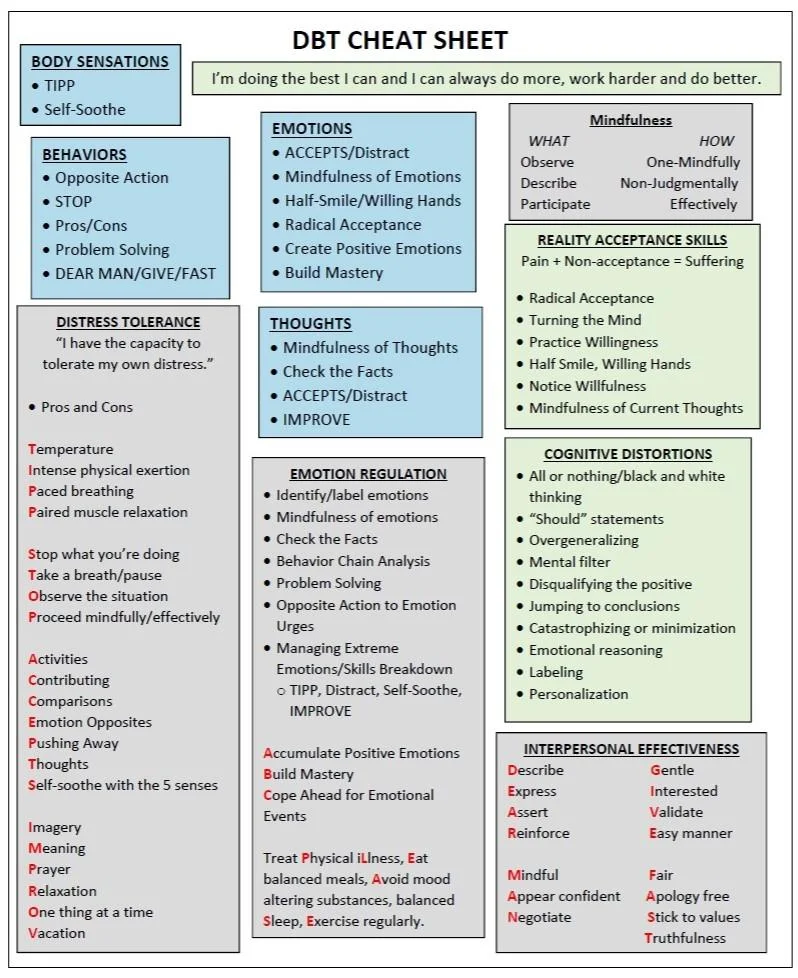 This process is similar to motivational interviewing. Clients recall methods they used to try to avoid or get rid of unwanted subjective experiences. They are then asked questions to evaluate each method: “Did these actions lead to symptom relief in the long term? Using this strategy, how did you pay off - your time, energy, health, relationships? Has it brought you closer to the life you dreamed of? nine0003
This process is similar to motivational interviewing. Clients recall methods they used to try to avoid or get rid of unwanted subjective experiences. They are then asked questions to evaluate each method: “Did these actions lead to symptom relief in the long term? Using this strategy, how did you pay off - your time, energy, health, relationships? Has it brought you closer to the life you dreamed of? nine0003 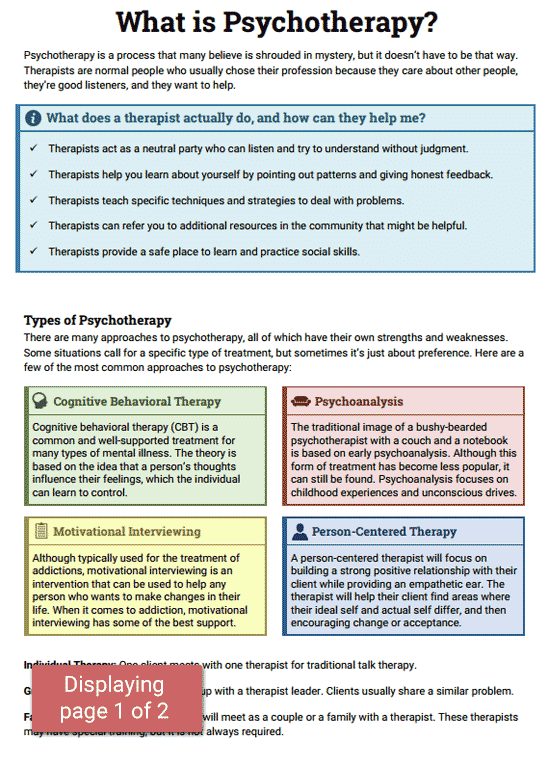 Michael realized that none of these strategies reduced his anxiety for a long time. And while strategies such as alcohol, sedation, and activity avoidance temporarily reduced anxiety, they came at a cost of quality of life. His "homework" was to notice and write down other strategies for controlling emotions, and evaluate their long-term effectiveness and impact on quality of life. nine0003
Michael realized that none of these strategies reduced his anxiety for a long time. And while strategies such as alcohol, sedation, and activity avoidance temporarily reduced anxiety, they came at a cost of quality of life. His "homework" was to notice and write down other strategies for controlling emotions, and evaluate their long-term effectiveness and impact on quality of life. nine0003 Emotion control is the problem, not the solution
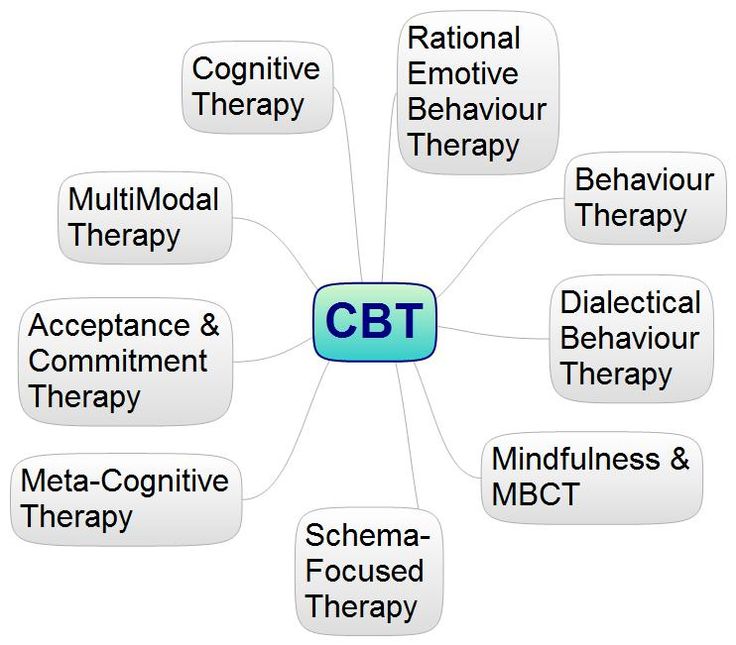 Resistance in quicksand is the worst action possible. The path to salvation looks like this: you lie on your back, spread your arms to the sides and, as it were, “float” on the surface. It's not easy, because all your instincts are screaming at you to resist. But if you follow your instinct, the sand will suck you in. nine0003
Resistance in quicksand is the worst action possible. The path to salvation looks like this: you lie on your back, spread your arms to the sides and, as it were, “float” on the surface. It's not easy, because all your instincts are screaming at you to resist. But if you follow your instinct, the sand will suck you in. nine0003 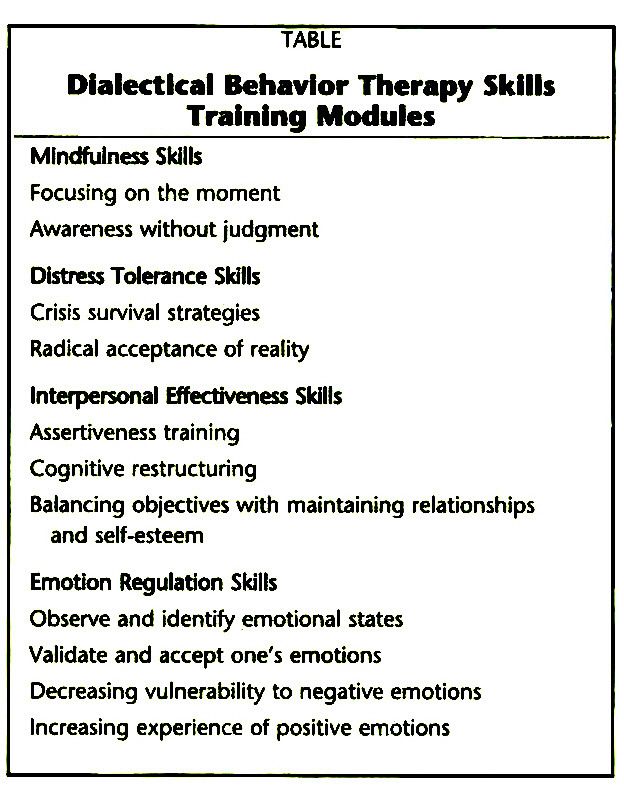 These secondary emotions do nothing, they are useless and unpleasant, and they drain and drain our mental powers. In response, we become irritated, worried, or begin to blame ourselves. Do you see a vicious circle? nine0003
These secondary emotions do nothing, they are useless and unpleasant, and they drain and drain our mental powers. In response, we become irritated, worried, or begin to blame ourselves. Do you see a vicious circle? nine0003 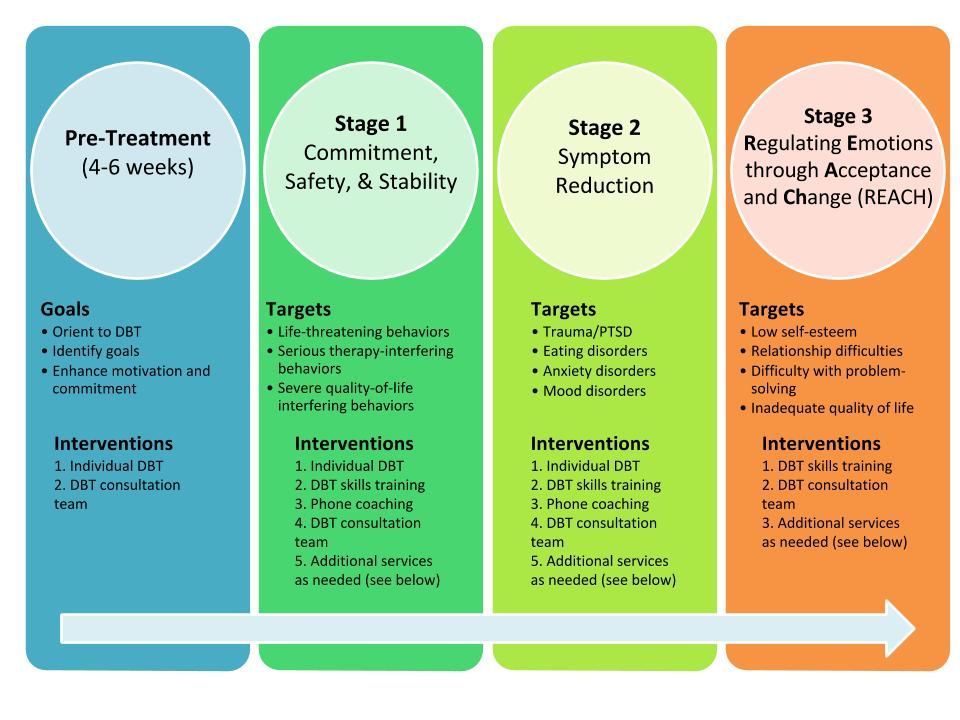 However, once we begin to resist it, the level of discomfort increases dramatically. We call this additional suffering "dirty" discomfort. Our resistance switch is like an emotional amplifier: as soon as we turn it on, we begin to feel anger about our anxiety, anxiety about anger, discouragement from depression, or guilt from feeling guilty. nine0003
However, once we begin to resist it, the level of discomfort increases dramatically. We call this additional suffering "dirty" discomfort. Our resistance switch is like an emotional amplifier: as soon as we turn it on, we begin to feel anger about our anxiety, anxiety about anger, discouragement from depression, or guilt from feeling guilty. nine0003 